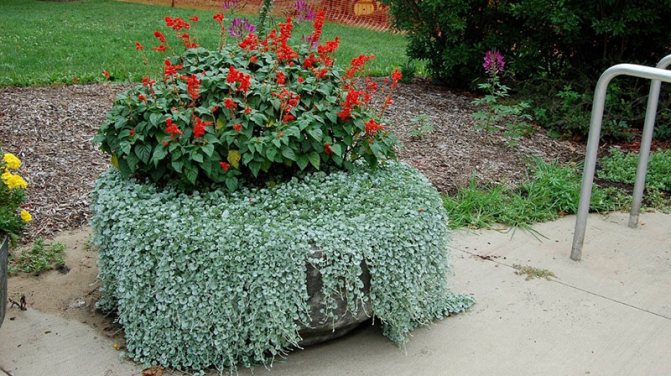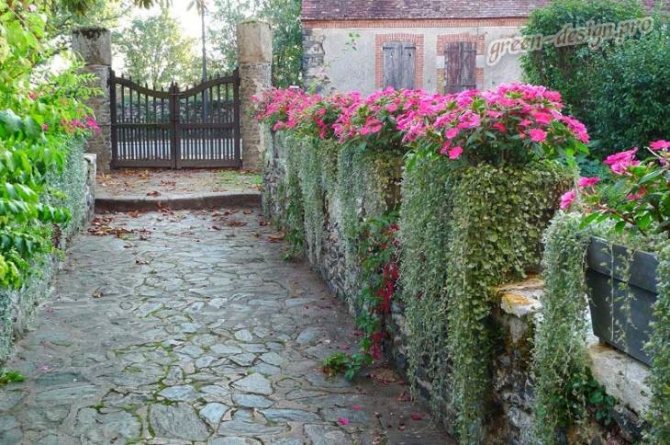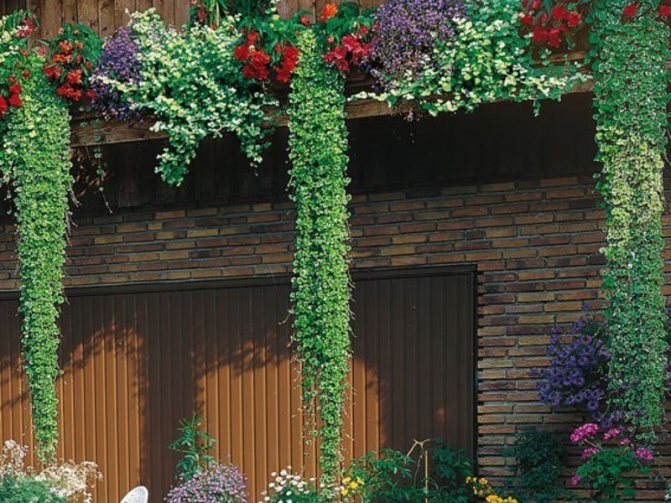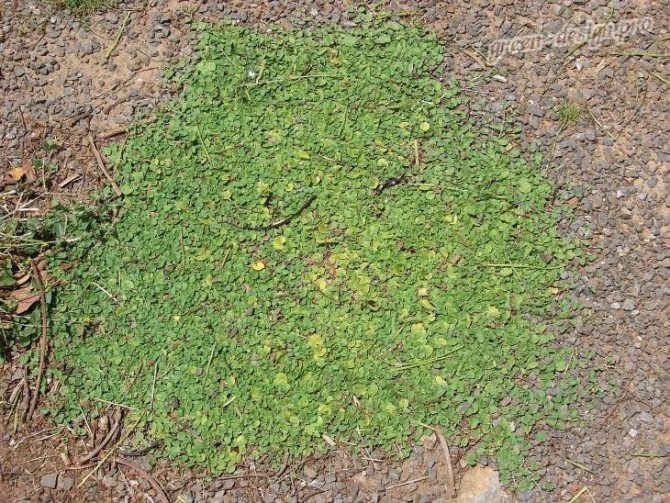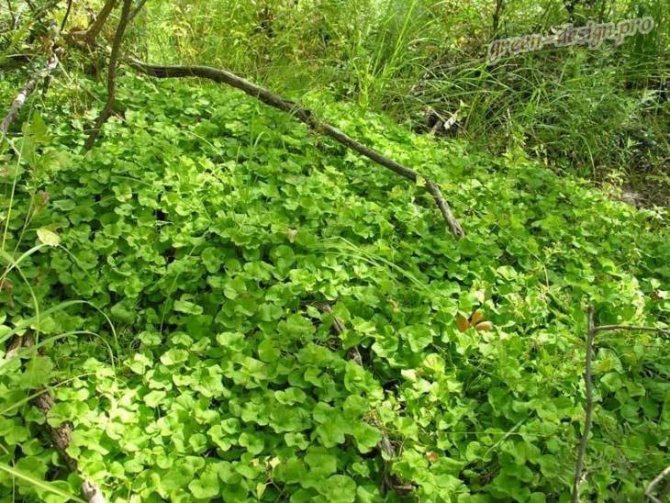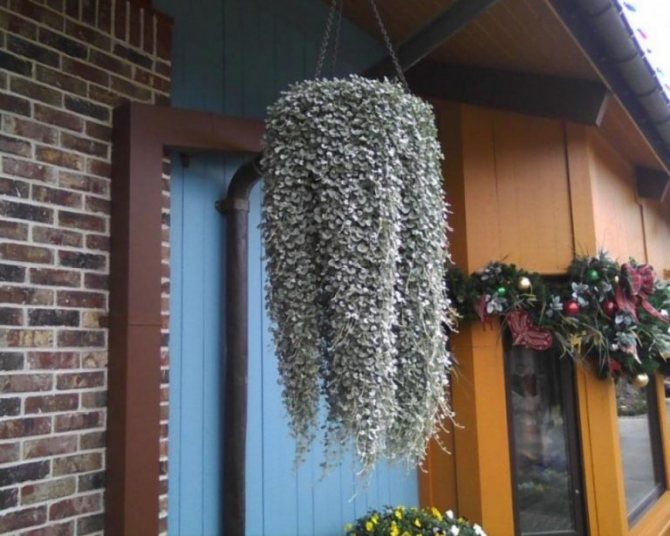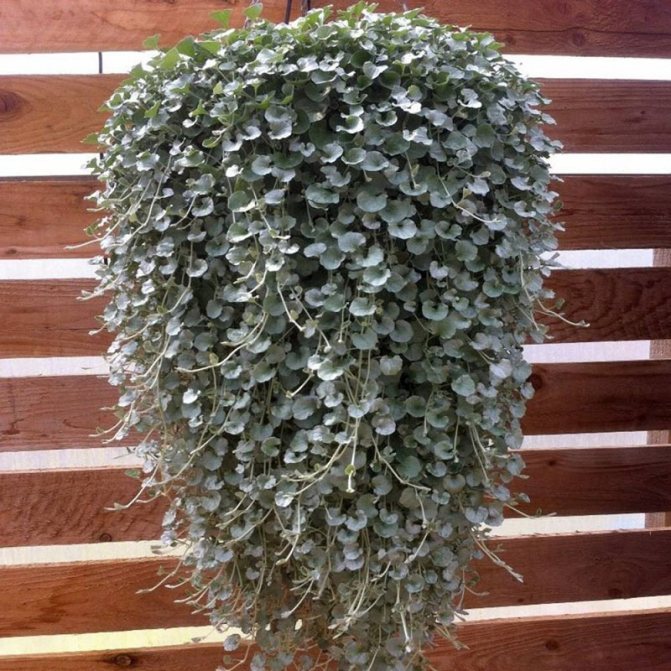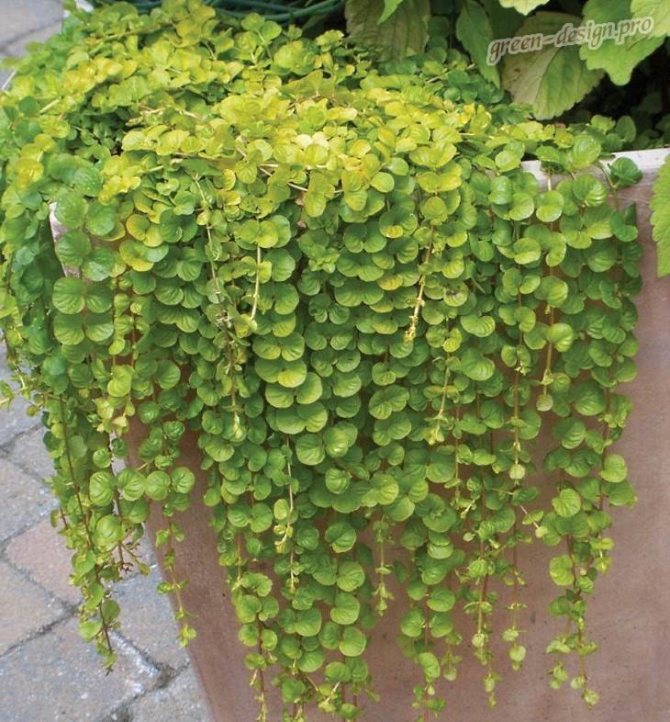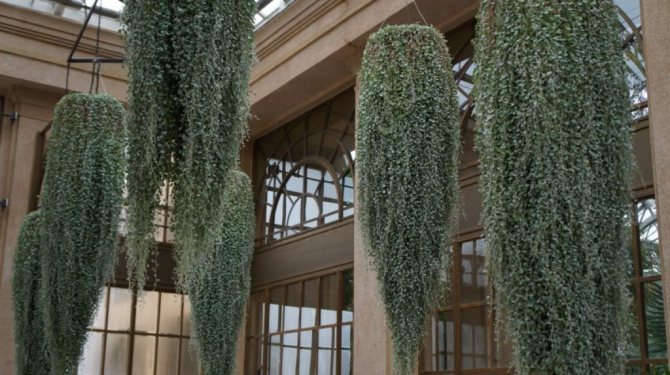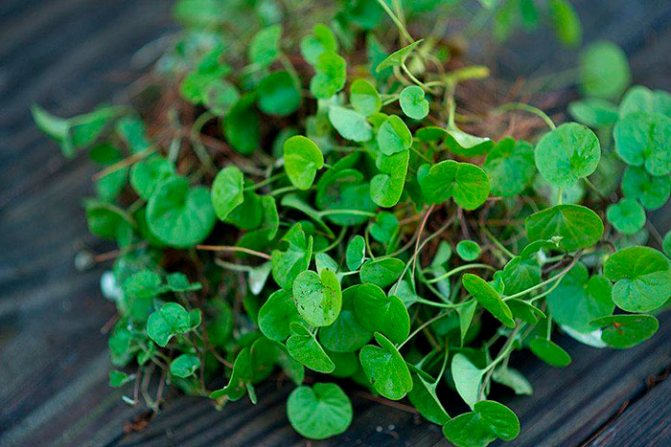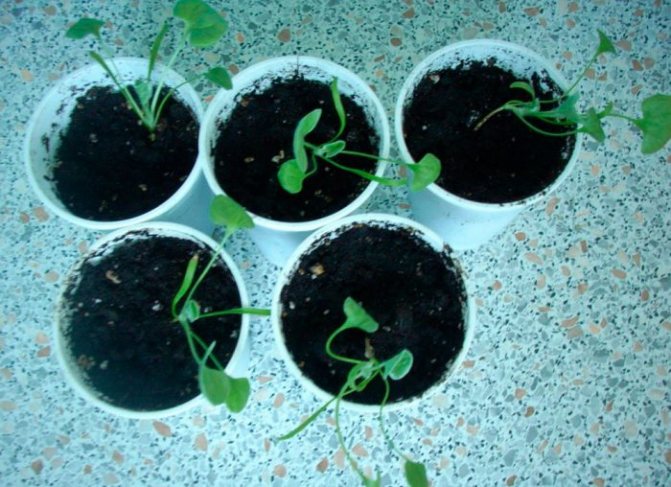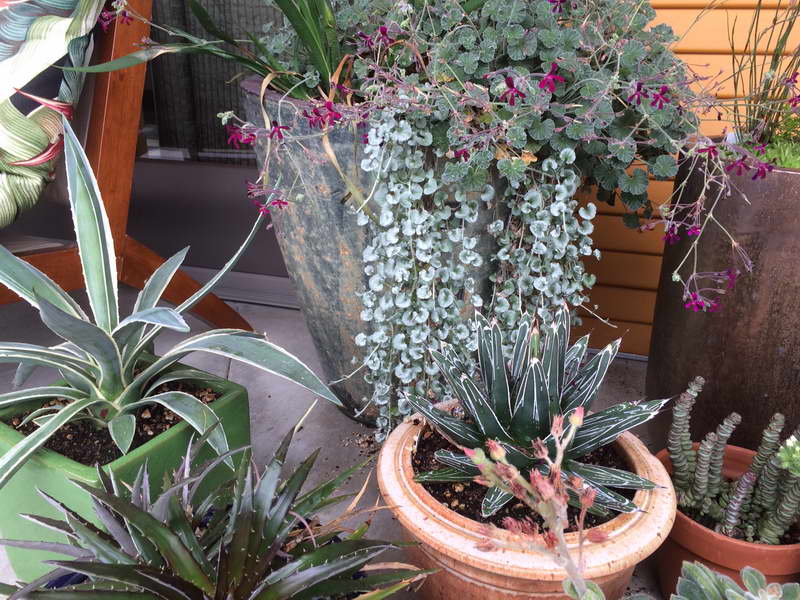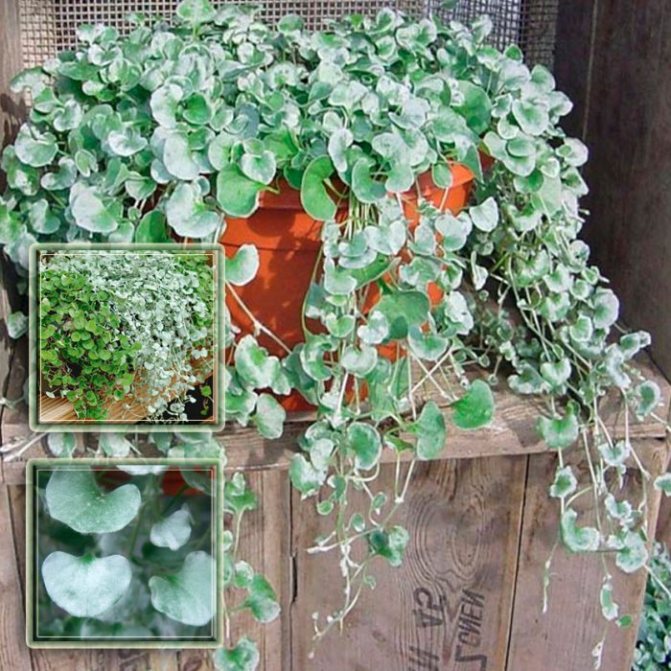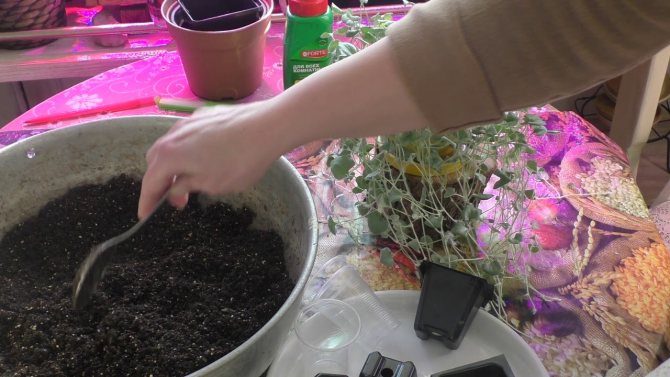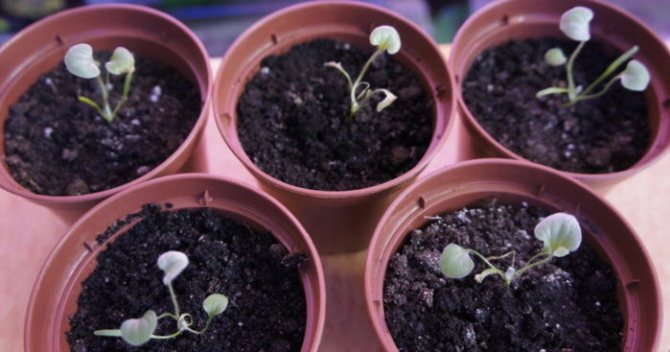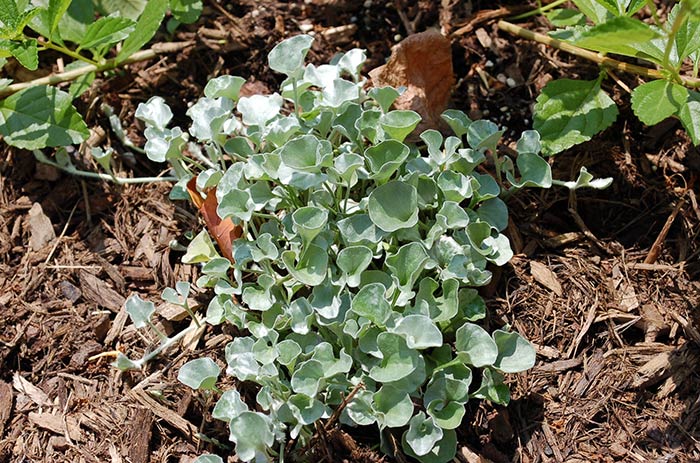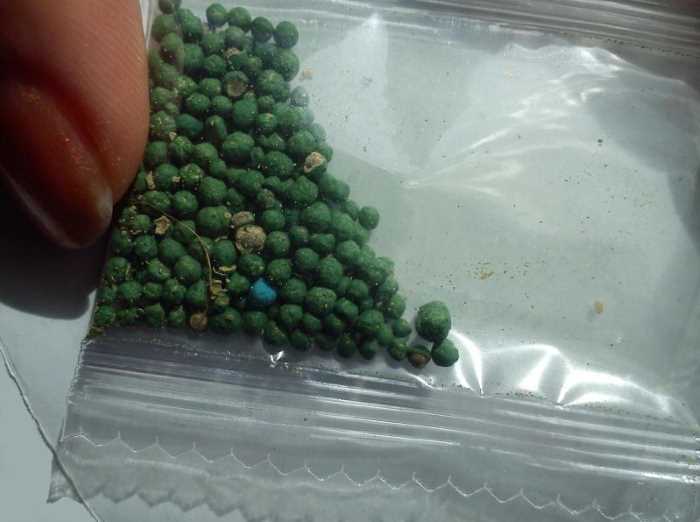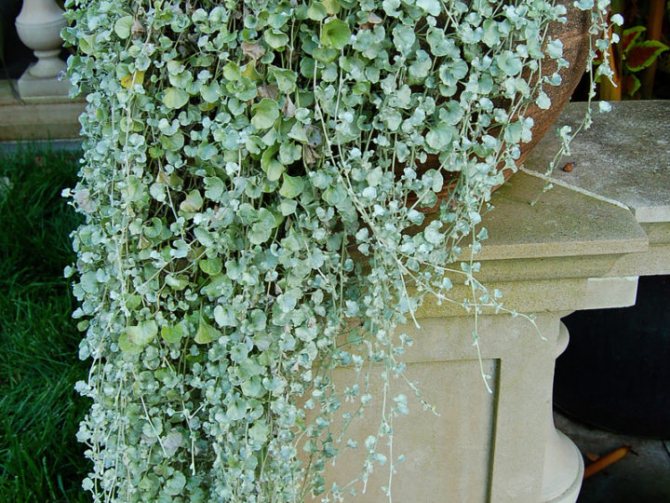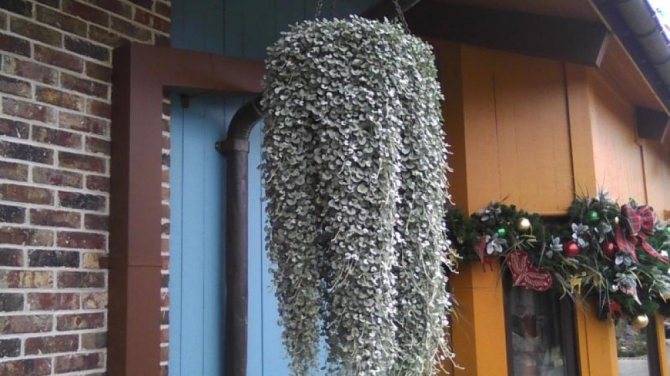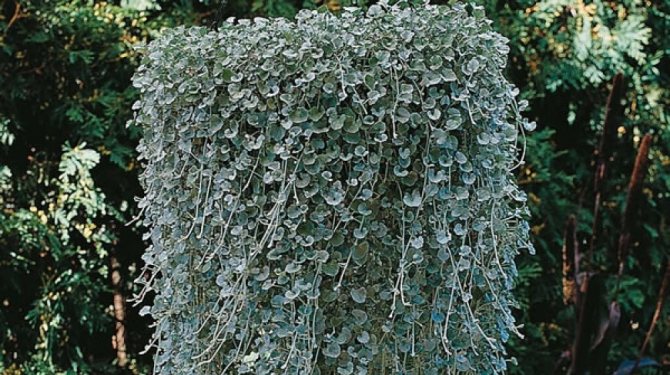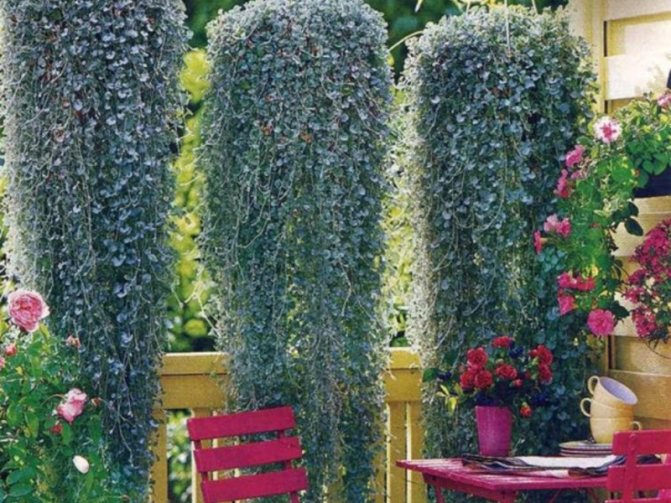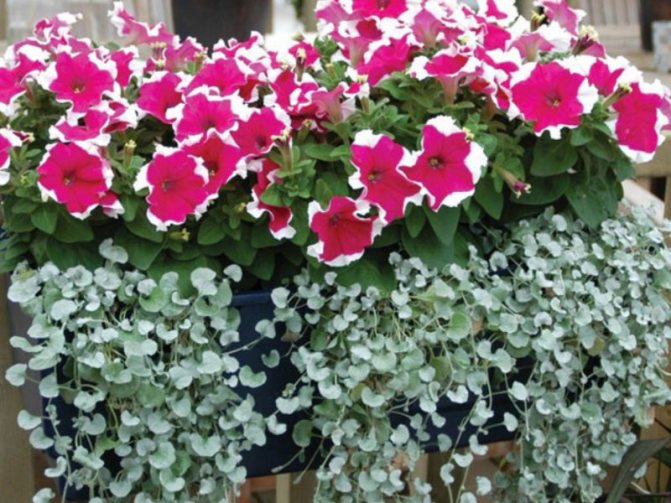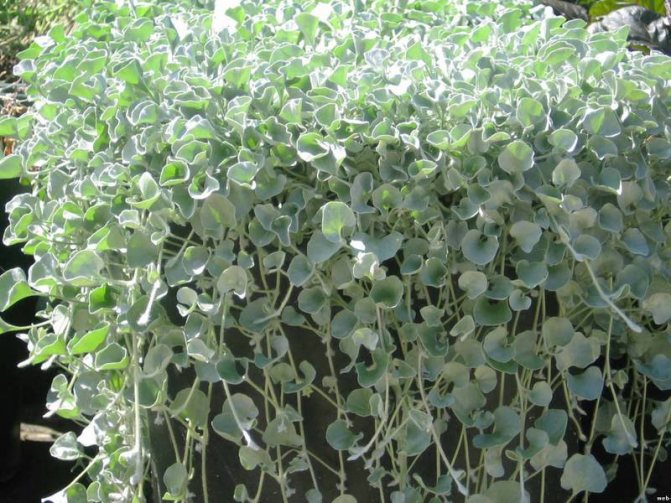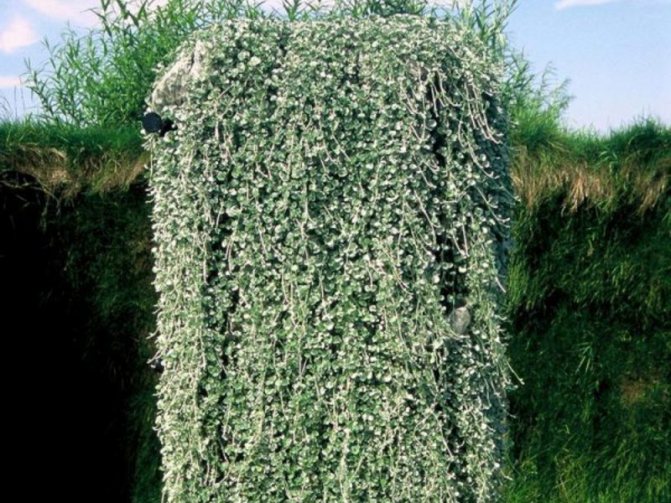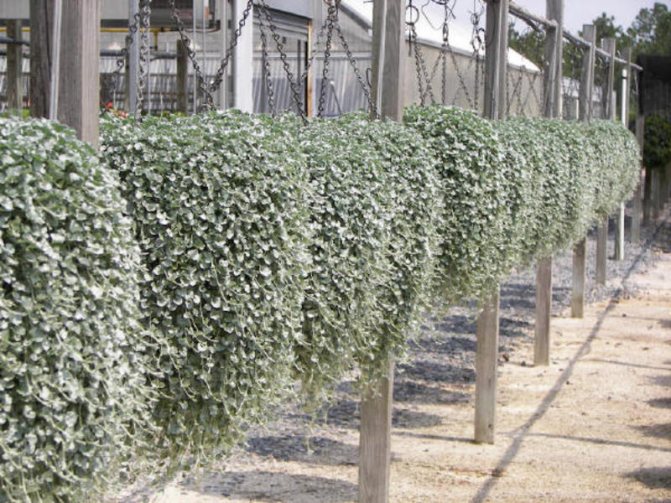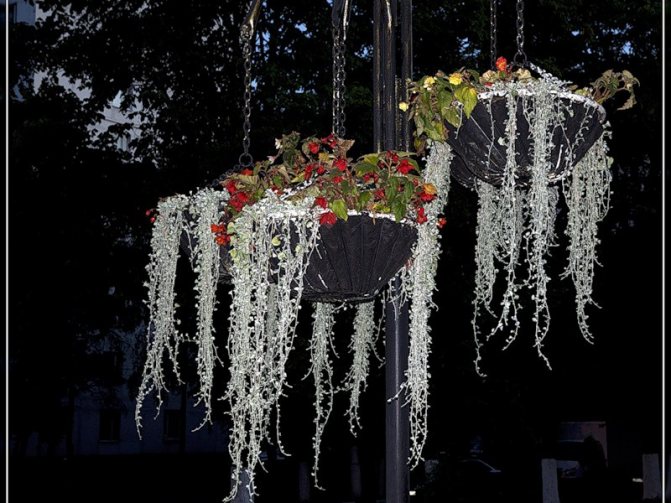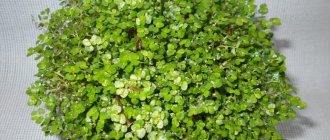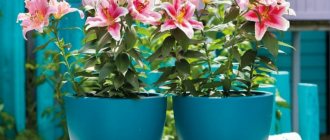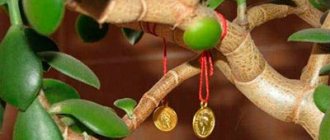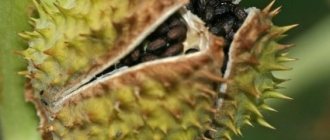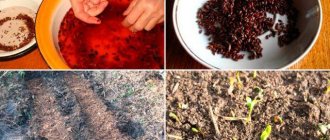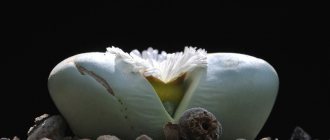Dichondra is a great plant for decorating flower beds or for creating green walls, cascades, arches, curtains, screens. Cascades of emerald or silvery green leafy shoots resemble a waterfall in shape.
It is widely used in the design of gazebos, terraces, verandas. She looks most expressive in hanging pots. Some growers replace lawn grass with it - dichondra grows excellently in partial shade, hiding unsightly bare areas among the trees, quickly forming a dense cover between the stones of the decorative path.
Dichondra
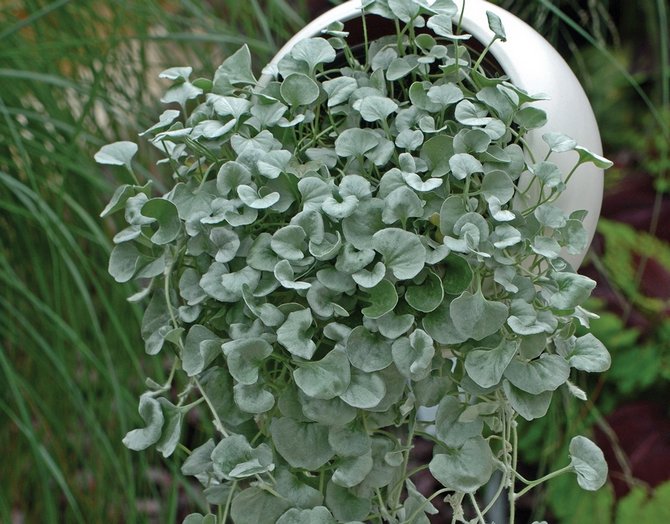
Dichondra is a herbaceous perennial plant that belongs to the Bindweed family. In wildlife, dichondra is found in fairly wide areas of America, Australia and East Asia. The plant lives in swamps and tropical rainforests. Dichondra takes its name from the Greek language. It translates literally as "two grains" and is due to the special structure of the fruit.
Dichondra has beautiful creeping stems, amelly, which can be easily rooted. The leaves are round, opposite. Petioles reach a length of 3 cm. It blooms with small flowers about 3 mm in diameter. The color is lilac, greenish or white.
When grown indoors, the most common dichondra is silvery (creeping), which has two varieties - dichondra emerald waterfall and dichondra silver waterfall.
Propagation by layering and cuttings
In summer, dichondra bushes are easily propagated by layering. To do this, the soil is well loosened around the plant, a strong long shoot is chosen and added dropwise in several places, spilling it with a root formation stimulator. To preserve moisture, it is advisable to cover the layers with a film or non-woven material. Very soon sprouts with the same varietal characteristics will appear. When 4 true leaves have developed, the plants are transplanted.
Another option is propagation by cuttings. In September, several well-developed stems are cut from the main bush and cuttings with 3-4 internodes are cut from them. Cuttings are planted in individual pots with a nutrient substrate, watered abundantly, covered with foil or cut bottles. With the onset of cold weather, pots with cuttings are brought into the house, the soil moisture is constantly maintained.
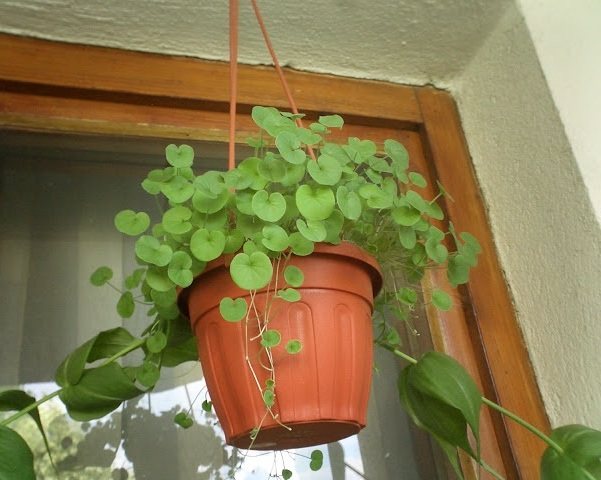

Video - Dichondra emerald waterfall: growing from seeds
With the development of landscape design, vertical gardening has gained popularity. An excellent option for its implementation is the "emerald waterfall" dichondra. It is a bush with thin long branches up to 1.6 m long. The plant has heart-shaped emerald-colored leaves about 3 mm in size. Blooming dichondra does not differ in showiness, its yellow-green flowers are rather small and inconspicuous.
Dichondra care at home
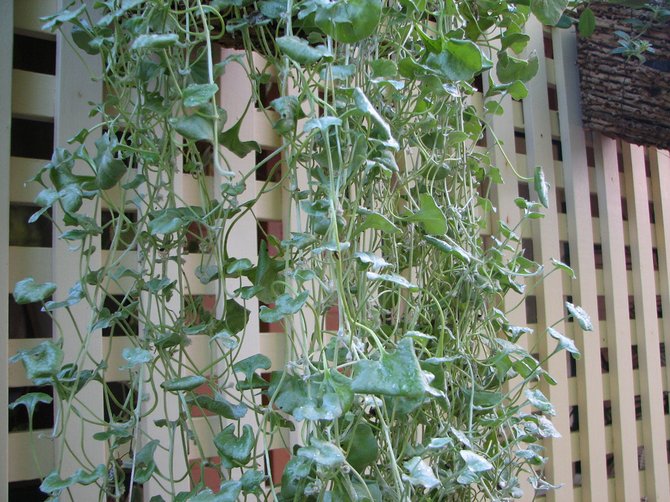

Location and lighting
The lighting level for dichondra depends on the color of its leaves. So dichondra with a green shade of leaves can grow well in the shade and in the sun, but with a silvery shade - only in a well-lit place.
Temperature
At any time of the year, the temperature in the room should vary between 18 and 25 degrees. In winter, it should not be lower than 10 degrees, otherwise the plant may die.
Air humidity
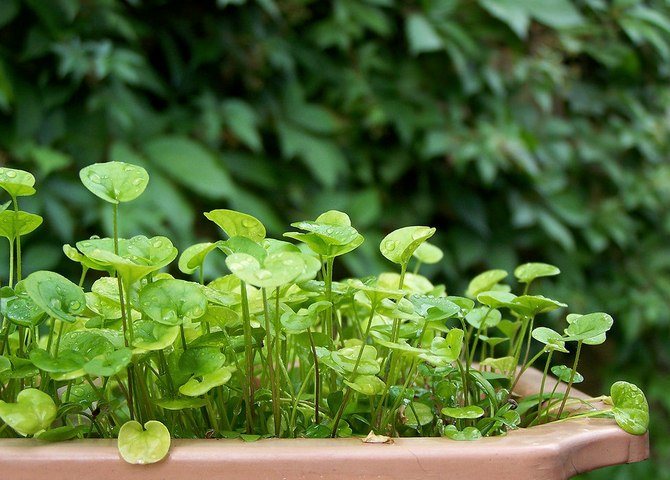

Dichondra can grow in rooms with low levels of air humidity, but will respond well to regular leaf spraying.
Watering
The pot in which the dichondra grows must contain a generous layer of drainage, since it does not tolerate stagnant moisture in the soil. Watering should be abundant, but it is important to ensure that the root system does not rot. If the substrate dries up, then the plant can spend some time without water. After watering, the dichondra will quickly recover.
The soil
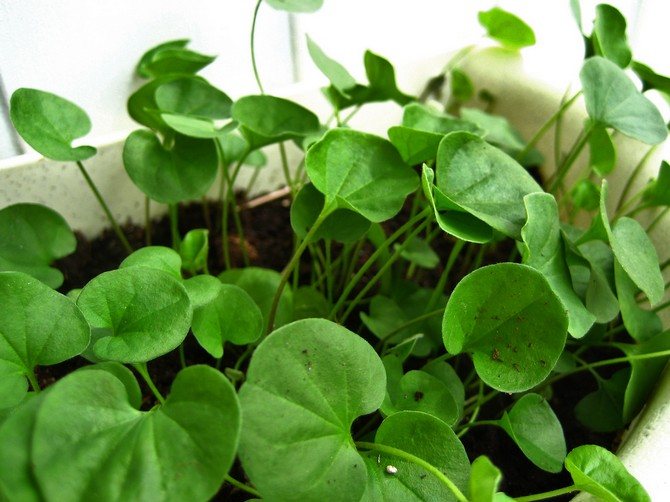

Dichondra is not at all demanding on the substrate. Universal soil for decorative deciduous plants will be optimal for planting.
Top dressing and fertilizers
Dichondra 2 times a month Dichondra needs feeding. The feeding period is from April to September. To do this, use top dressing for decorative deciduous plants. In winter and autumn, the plant is dormant and does not need feeding.
Transfer
Dichondra is an annual plant, therefore, the process of cuttings is carried out every spring.
Dichondra as a houseplant Care and transplantation of dichondra in an apartment
The flower is often grown as a houseplant. Caring for a beauty is simple: timely regular watering (without excess) and sufficient lighting. The air temperature in the room is quite comfortable for the plant, you should not allow a decrease of less than 10 ° C. There are no special requirements for air humidity. The plant responds well to feeding in the spring-summer period with a frequency of 1-2 times a month. Use complex fertilizers for ornamental deciduous plants according to the manufacturer's instructions. The soil for planting becomes nutritious, with a slightly acidic reaction.
It perfectly tolerates the neighborhood with other colors, which is used to draw up spectacular compositions. Dichondra is usually planted along the edge of a volumetric pot, creating a cascading waterfall of leaves, shading decorative flowering plants.
Over time, the space for the dichondra becomes small, there is a need for a more spacious container. The flower is transplanted, if necessary, by the transshipment method - when the roots are tightly braided with an earthen lump in a pot. The signal for this operation is the appearance of roots from the drainage holes of the flowerpot. To do this, select more voluminous dishes, on the bottom of which expanded clay is laid, sprinkling it on top with a small layer of soil.
The roots that protrude from the drainage holes are trimmed. With one hand, take the top of the pot, turn it over in such a way that the container is at the top. With the other hand, the flowerpot is removed from the plant like a hat from the head. Then they gently turn the roots into a new dish, pouring fresh soil into the space between the walls of the pot and the roots.
If it is not possible to keep adult plants in an apartment, then many growers grow dichondra as an annual, so in the fall they cuttings, rooting lashes, thereby rejuvenating the flower. Such landings take up very little space, and it is much easier to care for them.
Dichondra bushes do not lose their attractiveness for 6 years or more with proper, timely care. In Australia and New Zealand, the plant is considered a vicious weed, ruthlessly exterminated by farmers and gardeners, but Europeans recognized dichondra as one of the best plants for vertical compositions.
Reproduction of dichondra
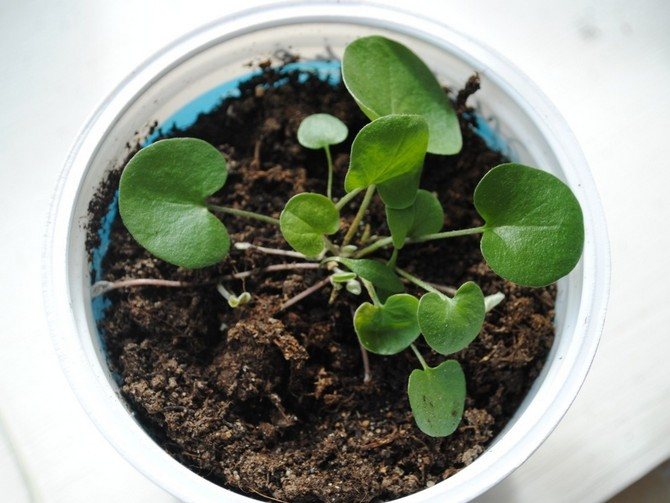

There are several ways to propagate dichondra: seeds, layering and stem cuttings. Seeds are sown in the ground in late winter and early spring, the container is covered with glass and left at a temperature of 22-24 degrees. The greenhouse is periodically humidified and ventilated. The first shoots will appear in 1-2 weeks. They grow slowly, and they will become similar in structure to an adult plant only after 3-4 months.
A simpler method is to propagate dichondra with stem cuttings. The shoots are about 5-6 cm long.They need to be rooted in an impromptu greenhouse.
Propagation by layering is the simplest of the propagation methods. To do this, take a shoot and press it to wet ground in several places at once. Rooting occurs in about 7-10 days. After the appearance of an independent root system, the stem is divided into processes.
Wintering
For the winter, it needs to be covered, since the plant dies at low temperatures. Liana is able to endure winter only in a mild climate, the root system is close to the surface, so it immediately reacts to precipitation.
To protect the flower, the soil is covered with a layer of sawdust and foliage from 7 cm high, and the “lawn” can also be covered with a layer of soil and covered with foil. This is done before freezing. The second option is to transfer the plant, along with an earthen lump, to the basement or greenhouse, where the temperature is kept within 11-15 ° С.
Will dichondra survive at home?
I grew dichondra ampelous from seeds, just started to grow - autumn came, could not leave it on the street, brought it home, it seems to continue to grow. What's next? The package says that it is a perennial.
Dear Tatiana! As for dichondra in winter, my opinion is. You can organize its wintering as a ground cover plant. She specially ran and took a photo of her own.
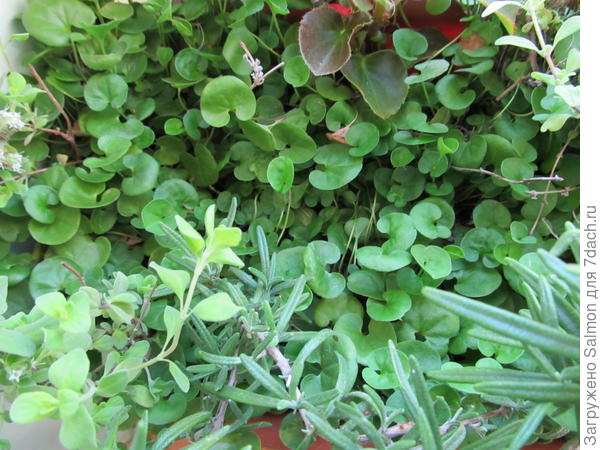

This is my box of rosemary and marjoram, later planted with purple-leaf begonia for decorative purposes. I thinned and rejuvenated the marjoram in the summer. And the dichondra for the second year, especially the summer on the balcony, has braided the entire surface of the box so that I can only get it in pieces, like a pie, tearing off the edges. And the marjoram, as you can see, is now suffering: it has nowhere to grow, so this beauty will have to be urgently "infringed" on the rights to the box with my spicy herbs in the kitchen! I want to note that as a ground cover plant, it is quite cute, and it can also hang along the edge like an ampelous one. You can try to put one branch on the soil and lightly dig in, press, moisten. And try to place the rest of the plant on the advice of the dear Lyudmila on the loggia and in the basement. Thus, you will find the most optimal wintering regime for the plant. About my wintering dichondra, it should be said that it takes place in a mode of 20-25 degrees and higher, sometimes the plant is in a draft (airing in the kitchen), but in bright diffused light, the soil is moistened 2 times a week, the soil itself is loose and nutritious, medium moisture-absorbing, I do not feed from November somewhere to mid-February, the rest of the time I water it with fertilizer only at that time, until I pinch the greens for salads. I would also like to share my experience with the silver dichondra, since it was she who did not want to winter in this mode. I explain this for myself by the plant's greater demands on lighting. But still I do not give up hope that with her I will get such a "rug" in the drawer, because she is even more beautiful. Dichondra (green and silver) also sprouted in me in different ways: green germination was higher, silver was capricious, and this year, having overwintered with problems in the room, she died in an ampel pot on the balcony. But the green one survived the heat, underfilling in the box.
Further care
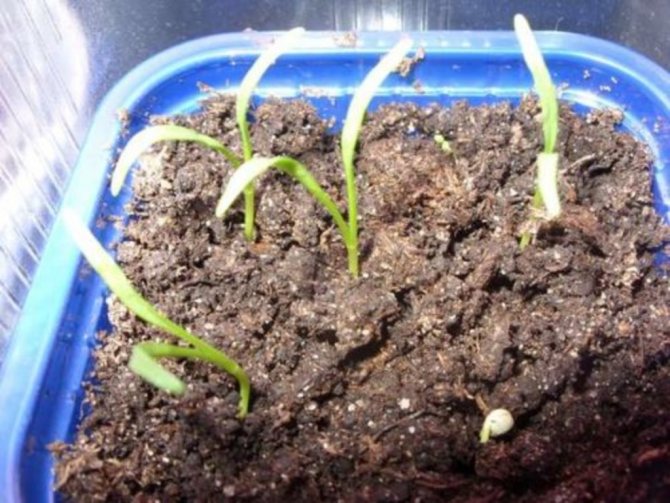

Until the emergence of seedlings, the soil must be regularly moistened, and the shelter must be removed for half an hour daily. Containers should be placed in a room with a temperature of + 23 ° C. Seedlings will appear in about 7-10 days after sowing the seeds. As they grow, the shelter must be removed.
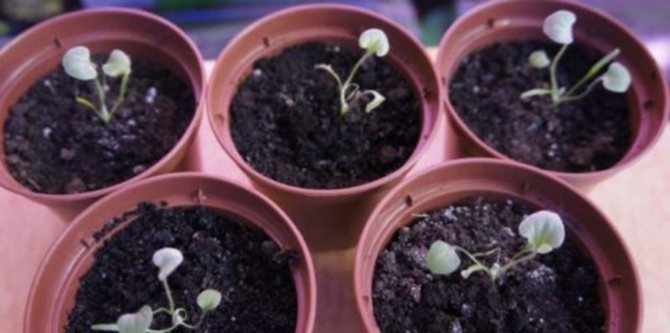

As soon as 3-4 real leaves appear, the plants should be dived into separate containers. When the seedlings get stronger, and warm weather sets in the street, they can be transferred to open ground. 2 weeks before the intended transplant, they need to begin to be hardened, taking them out daily for fresh air for a while.
Before transplanting plants to a flower bed, a place on the site must be prepared. The soil should be dug up and leveled, and the weeds should be removed.
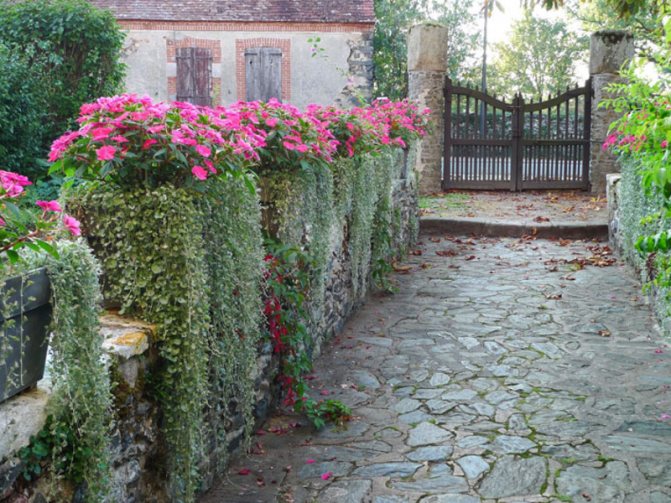

Caring for plants after transplanting into open ground consists in carrying out the following procedures:
- Regular watering. You need to water the dichondra at the root. In dry weather, it is also recommended to carry out sprinkling every day, morning and evening. Waterlogging of the soil should not be allowed, as this will lead to decay of the roots.
- Fertilization. It is necessary to feed dichondra during the growing season 2 times a month. It is recommended to use complexes with a high content of nitrogen and potassium as a fertilizer. It is advisable to add them after watering.
- Carrying out formative pruning. It is recommended to prune shoots throughout the summer period as they branch and grow. They need to be shortened by 7 cm. The last procedure must be carried out in the fall.
- Loosening the soil.
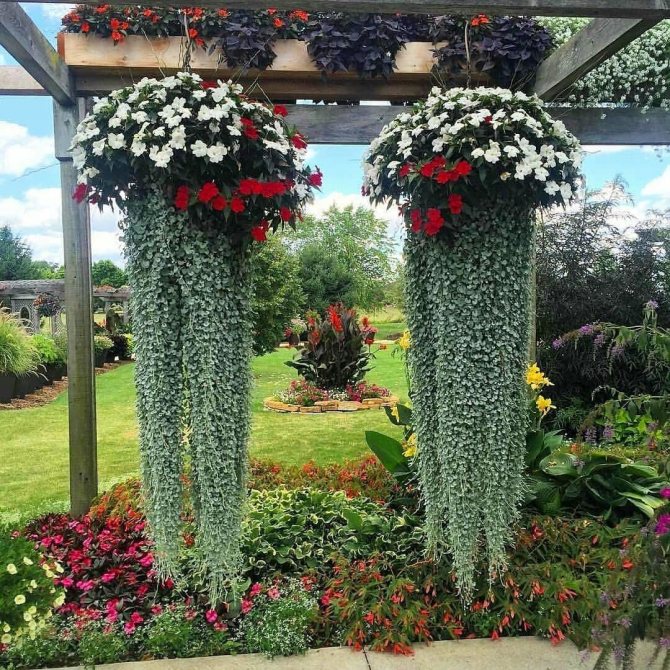

The thermophilic plant is most often grown as an annual because it does not tolerate harsh winters. But in the southern regions, dichondra can be preserved by mulching in the fall with needles or fallen leaves.
Dichondra is distinguished by undemanding care, drought resistance and attractive appearance. She looks great not only separately, but also in group compositions. Dichondra is best combined with petunia, pelargonium and begonia. This evergreen is also a good alternative to lawn grass.
Among all ampelous plants, the beauty dichondra is the most extraordinary and attractive. Cascades of emerald or silvery-green leafy shoots resemble a waterfall in shape, which is reflected in the name. Dichondra is widely used in the design of gazebos, terraces, balconies, but it looks most impressive in separate groups in hanging pots. The plant propagates better by layering and cuttings, but if desired, it is not difficult to grow it from seeds.
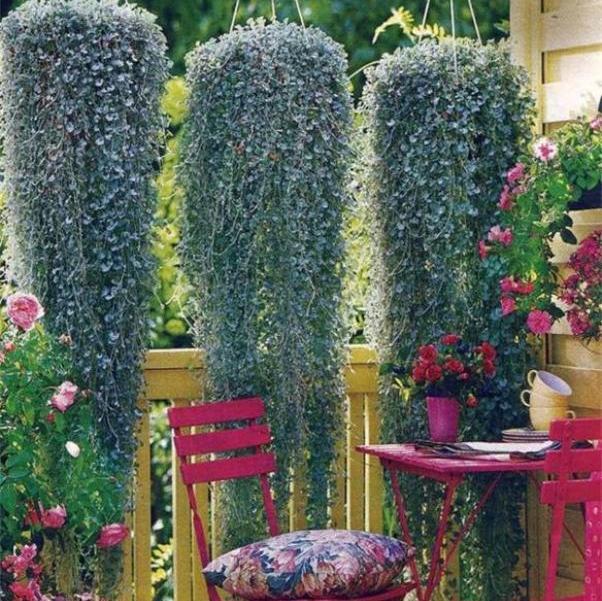

Contents of step-by-step instructions:
Dichondra silvery - a waterfall in a pot
A novelty in indoor floriculture is a beautiful ampelous decorative deciduous plant Dichondra silvery, or creeping (Dichondra argentea, Dichondra repens).
She first appeared at the International Exhibition "Flowers 2004" and won a silver medal. Dichondra belongs to the Bindweed family, about 10 species of this plant are known. Under natural conditions, it grows in tropical and subtropical swamps and humid forests of East Asia, Australia and America.
Dichondra, as practice shows, is a rather unpretentious ampelous plant. Its numerous thin lashes hanging down 2 meters (and in warmer climates with long summers up to 6 meters!) Or creeping along the soil surface are covered with small bright green or silvery leaves. The flowers are inconspicuous and of no interest.
Dichondra is one of the best ornamental foliage crops for pots and hanging baskets. Silvery dichondra is very fond of phytodesign masters for the unusual color of its leaves, which serves as an excellent background for almost any flowering plants.
In addition, with its help, you can easily create an imitation of a running stream, waterfall or lake in the winter garden. Cascading stems, reaching the ground, can root and grow like a groundcover!
Dichondra looks attractive in the garden under trees, in shady places where ordinary lawn grasses cannot grow. It can be planted in the patio between the slabs of the footpaths.
In room culture, two varieties are used: "Emerald Falls" with round green leaves and a branched stem; Silver Falls with silvery leaves and longer shoots.
Dichondra care.
Lighting. An emerald waterfall with green leaves grows well both in the sun and in the shade, in the shade the leaves are larger.Dichondra with silvery leaves feels better in the sun, but it grows normally in partial shade.
Temperature. It grows normally at a temperature of 18-25 degrees, below 10 degrees is not desirable.
Benefits
A novice florist, who saw this flower only in the photo, easily recognizes it in reality. In winter, this flower can be found in greenhouses and conservatories. Dichondra grows well at home, but her growth rate is not the fastest Therefore, when growing dichondra have to be patient: it may take a long time to see the silver waterfall. Subject to equal care, the dichondra looks very elegant. However, if you neglect the basic care recommendations, the plant will quickly take on an ugly, neglected look. Dichondra is very popular among fans of decorative floriculture, because:
- Overgrown lashes of plants look very impressive in beautiful pots;
- Grows well in winter gardens and indoor greenhouses;
- If it grows in a personal plot, it can grow in the most shaded areas, there, where refuses to grow any other herb. The grass looks very impressive, sprouting through a path covered with tiles or stones;
- Using it, you can create a very believable waterfall effect. This plant is often used to decorate the interior of cafes, restaurants, lounges in manufacturing plants. However, in children's institutions it is better not to use climbing plants, because by pulling on the lashes, the child can drop the pot or flowerpot over himself. For the same reasons, you should not grow a flower in a house where fluffy pets live: cats or dogs.
Ampel dichondra
Dichondra flowers are widely known to landscape designers. This is essentially an annual, which is used for covering and decorative purposes in alpine hills, when shading, decorating facades and hedges. It is planted in hanging pots and special containers. Creates an amazing emerald or silver backdrop for beautifully flowering plants.
But do not forget that ampelous dichondra grows well at home, allowing you to form the most sophisticated interior. Many gardeners take an adult plant from the garden for the winter to a warm apartment, thereby preserving not only the decorative properties of the dichondra, but also the finished planting material. After all, this flower reproduces well by separating cuttings.
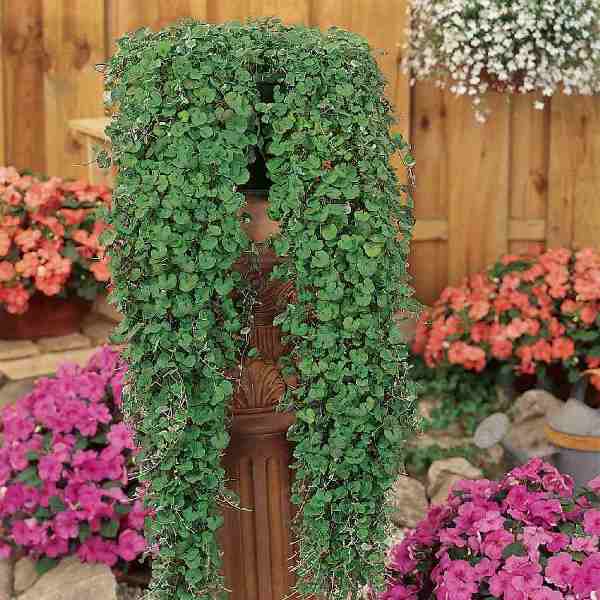

Ampel dichondra is a small genus of flowering plants from the creeping stem family. Its habitat is the tropics and subtropics, swamps and other humid places in America, New Zealand, East Asia and Australia. The flower is one of the most popular plants for decorating the garden and home in pots or hanging baskets. The name of the genus comes from the Greek words δίς (dis), which means "two," and χόνδρος (chondros), which means "grain." This applies to fruits.
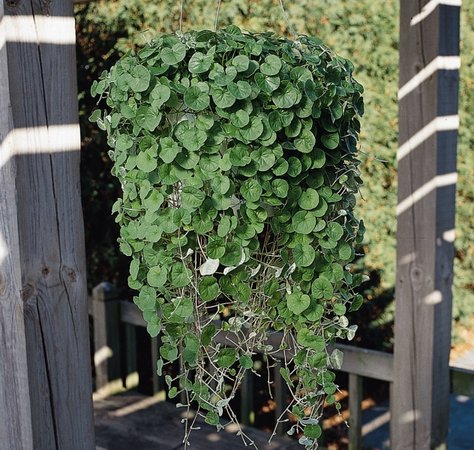

Watering mode
Despite the fact that in the wild, the plant actively grows in swamps, it is easier to grow a plant in arid conditions than in wet conditions. For irrigation, settled warm water is used. Watering is necessary as needed, constantly maintaining the soil slightly moistened. The frequency of watering is influenced by climate, air temperature, shoot size, planting density, location.
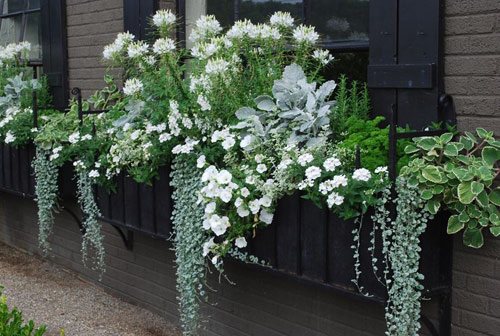

Dichondra in the exterior
Description of dichondra with photo
As I said, the dichondra plant has creeping stems that easily take root at the end nodes and form a kind of rug on the surface. Plant height can reach 20 cm, length - up to one and a half meters. Their peculiarity lies in the fact that in the shade they are able to grow more than in the sun.
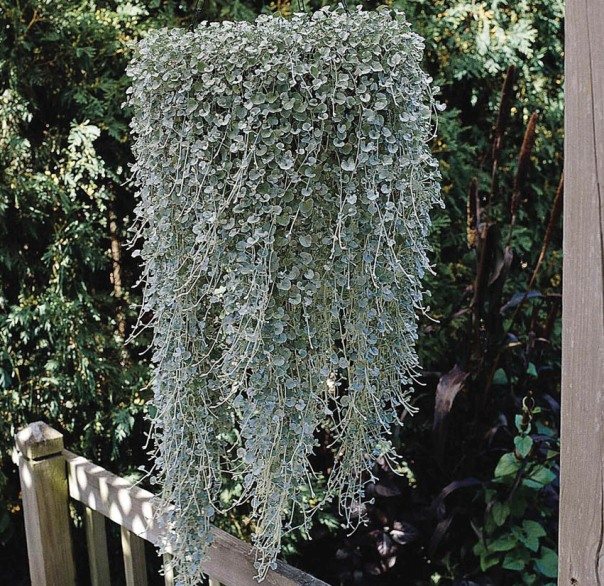

The color of the leaves is mostly green, but it may vary in some species.So, for example, Dichondra silvery has leaves of an unusual bright silvery color. And there are species with gray leaves.
Dichondra flowers are small, only two to three millimeters in diameter, white, yellow or green. You should not rely only on the description of the plant, we suggest that you look at the photo of the dichondra from various angles:
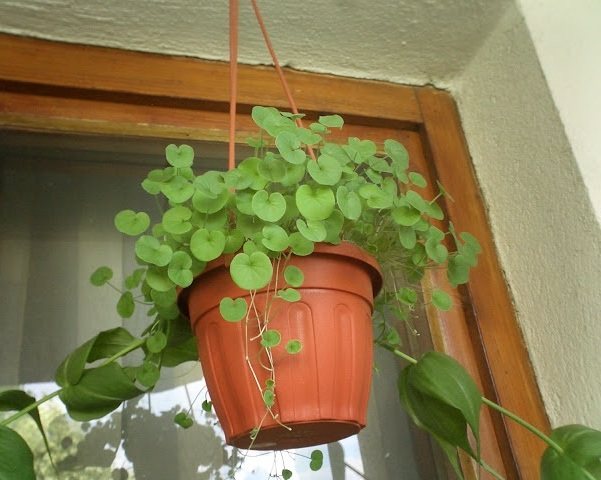

A beautiful effect when decorating a garden will turn out if you decide to grow two species in parallel at once. In order to highlight the color of the dichondria, we recommend that you use other annual crops as well. For example, it will look great in combination with begonia or petunia, Chinese rose or garden chamomile.
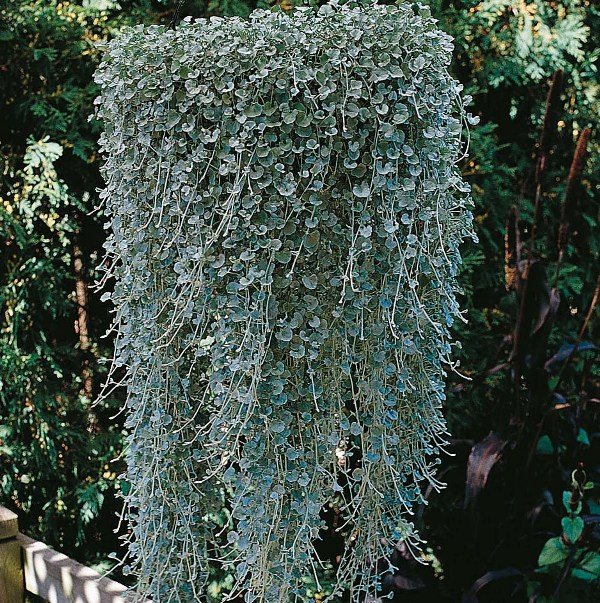

In the 50s and 60s of the last century, dichondra was popular in Southern California as a plant replacing the lawn in the garden. But such a lawn is very difficult to maintain in perfect condition - it requires a lot of effort and care. In other states of the United States, the plant is considered as a weed and is fought against its spread. These are the different roles for a flower in only one region !!
Dichondra in landscape design
Most often, dichondra can be found in gardens and parks in the southern regions, where winters are not too harsh, and the warm season lasts from early spring to late autumn. Ampel plants with picturesque cascades and waterfalls decorate fences, hedges, open gazebos and terraces, are used to create colorful landscape sculptures and compositions.
By combining different varieties of dichondra in ground cover landscaping, picturesque lawns are created that do not require mowing and are resistant to trampling. As a perennial lawn, dichondra is used exclusively in the southern regions, where in winter the thermometer does not drop below zero.
Dichondra flower varieties
There is still controversy over the number of species of this plant. Some argue that there are ten of them, while others insist that there are only two types of dichondria.
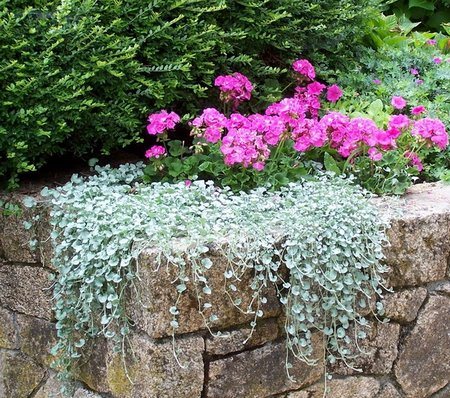

We will tell you about the most common varieties of dichondra, which should always be in the arsenal of a caring gardener, landscape designer or just a person who is passionate about indoor floriculture. These dichondra varieties can be great for shading and decorating balconies and loggias.
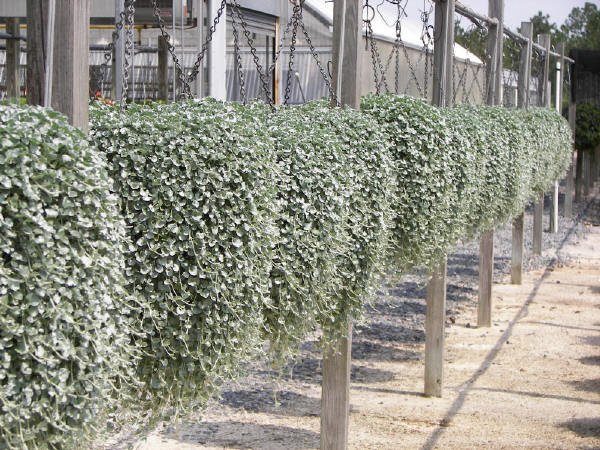

Dichondra "Emerald Falls"
Dichondra repens is a small herb from New Zealand and Australia. But in both regions, it is better known as a weed, and not as a beautiful and peculiar flower. Leaves - up to three millimeters in length, flowers - very tiny, yellow-green hue. They appear mainly in the summer, but they can also bloom calmly at other times of the year. Known as an ornamental plant, this species is most often used as a replacement for lawns or grass that covers the soil in gardens. At home, it can be used to form living sculptural groups and decorate walls.
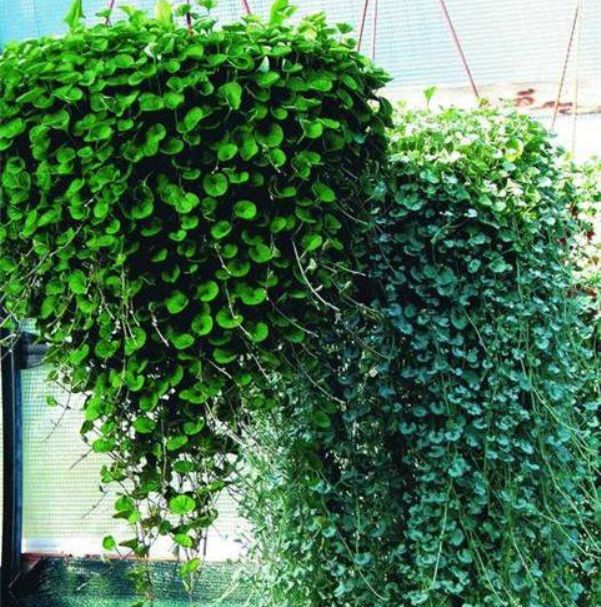

A similar cultivar is Dichondra micrantha used as a soil cover plant. In some regions it is still an excellent turf that grows quickly and does not require constant mowing.
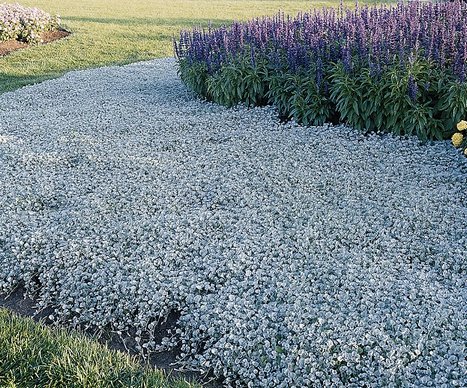

Dichondra "Silver Falls"
Dichondra "Silver Falls" (Dichondra argentea) is used as decoration for simple potted plants. Of all the species, it needs water least of all. Differs in amazing appearance. This splendor can decorate a balcony, an open terrace, a garden gazebo and even just a darkened corner in your apartment.
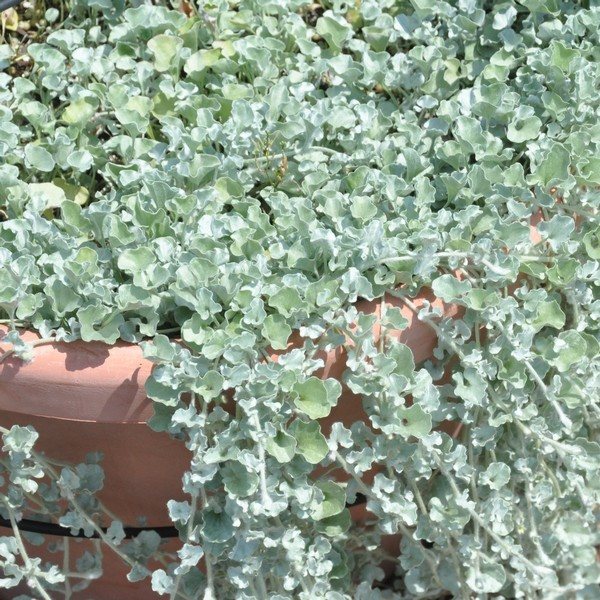

The fact is that silver dichondra is not demanding on natural lighting conditions. This shady plant grows well even in conditions of relative darkening. However, it should not be driven to fanaticism, since having lost its natural sunlight, the plant will gradually become more and more pale until it finally loses its decorative effect.
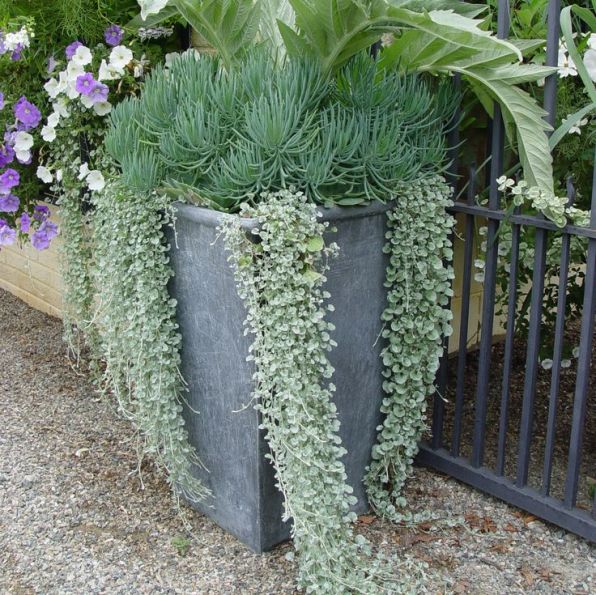

Description of plant varieties
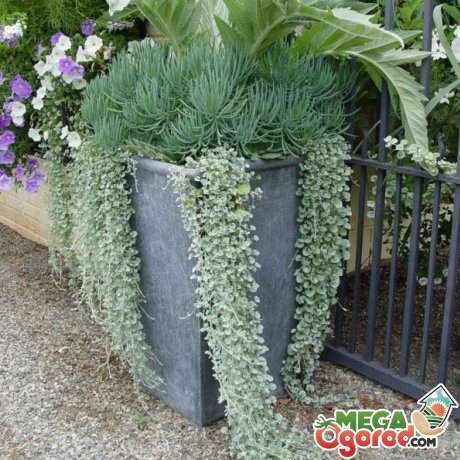

How many species do dichondra have is a moot point. According to some sources, there are about ten of them. But it is known for sure that the most common among florists and florists are two popular types:
- Dichondra "Silver Falls". This variety is distinguished by an unusual color of rounded pubescent leaves that resemble a waterfall of silver coins. The roots of the plant are superficial, and the height of the shoots does not exceed 20 cm, and their length reaches one and a half meters. The "Silver Waterfall" blooms with small nondescript purple flowers. This variety in garden compositions can favorably set off plants with bright flowers. It goes well with petunias, verbena, lobelia, balsam. Shoots of Silver Falls dichondra can create the illusion of running water when planted in the shape of a stream.
- Dichondra "Emerald Falls". The plant has long lashes and green leaves three millimeters in size. It blooms with small, rich yellow flowers that bloom throughout the summer season. In their homeland, dichondra is considered a weed. In some countries, the plant is used for lawn landscaping, which does not require a mowing. Landscape designers use the emerald waterfall of leaves to decorate sculptures, gazebos and fences. The "Emerald Falls" variety prefers light shading, but is capable of growing in sun-drenched meadows. If the plant is regularly sprayed, the density of the leaves will increase and the flower will look fresher. Dichondra "Emerald Falls" is easy to grow from seeds, because it does not require special care.
Growing dichondra from seeds and layering
The flower is not whimsical - it grows well both in the sun and in the shade. But the variety "Silver Falls" is better placed in the sun - so its leaves will grow better, and the appearance of the flower will be more spectacular. Growing dichondra from seeds is a rather painstaking work that requires special attention to the growing conditions of young growth. It is much easier to grow dichondra from cuttings.
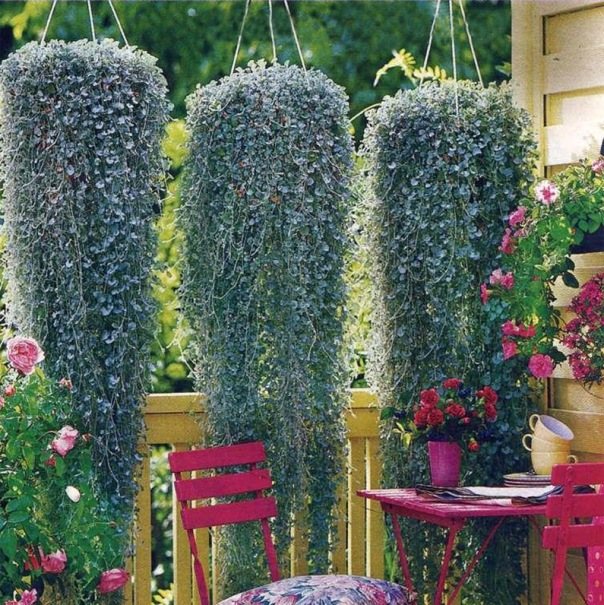

To do this, it is enough to cut 5 - 7 cuttings from an adult plant in autumn or spring and root them in settled clean water. Roots appear after 5 to 8 days. After that, we plant the stems in the prepared soil in small containers of 3 pieces in 1 group. This is enough to get a lush and beautiful dichondra ampel plant. A month later, dichondra is planted on a permanent "residence".
Why is the plant recommended to be planted with seeds?
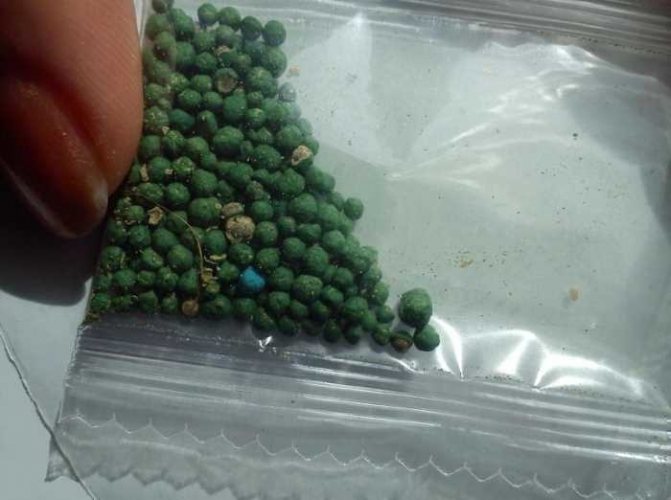

This plant can be propagated vegetatively, but experts most often resort to growing dichondra from seeds. Cuttings and cuttings are quite problematic to find, and seeds are sold in most flower shops.
Another advantage of the seed method is that the rooting process is much faster than with vegetative propagation.
Planting dichondra seeds
On average, the time for sowing dichondria seeds is the end of February - the beginning of March. Sprinkle the seeds with earth, cover with glass and put in a warm place. It is important for the first time to maintain constant humidity and a temperature of at least 22 ̊С. The first shoots appear within one - one and a half weeks after planting dichondra seeds. It is recommended to transplant to open soil when the first two leaves appear with diameters of at least 10-15 cm.
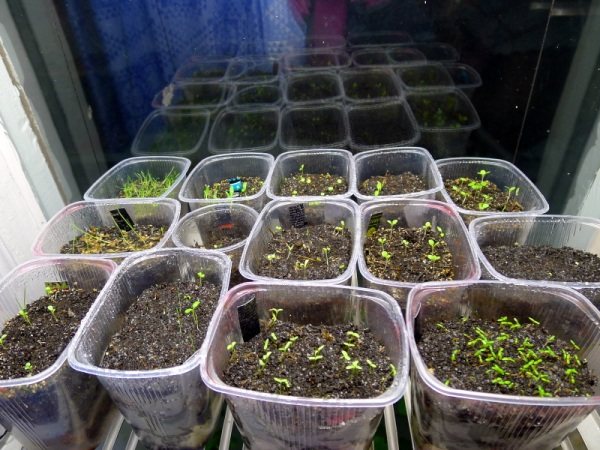

The plant grows slowly, so in the fall-winter you should move it home and gradually reduce watering. But be careful - lack of moisture can lead to the fact that the leaves begin to curl up and the plant gradually dies. Try to provide the flower with an additional source of light and heat during wintering. To cause branching, the stems must be pruned when they reach 7-8 centimeters in length.
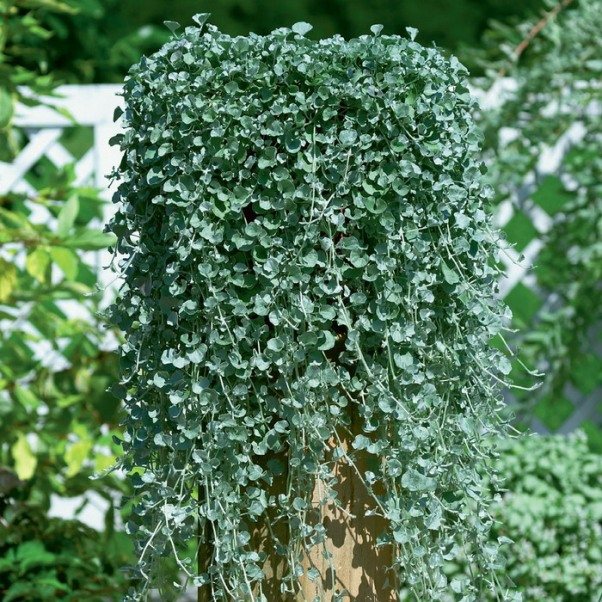

The main care for ampelous dichondra is timely watering and the introduction of complex mineral fertilizers. To obtain beautiful and lush foliage, complexes with a predominance of potassium and nitrogen are necessary. In the spring and summer periods, root feeding is carried out once a week, foliar feeding - 2 times a week. In winter and autumn, foliar dressing is replaced by regular foliar spraying. In an apartment with central heating without a humidifier, this should be done daily. Root dressing in winter and autumn is carried out no more than 1 time per month.
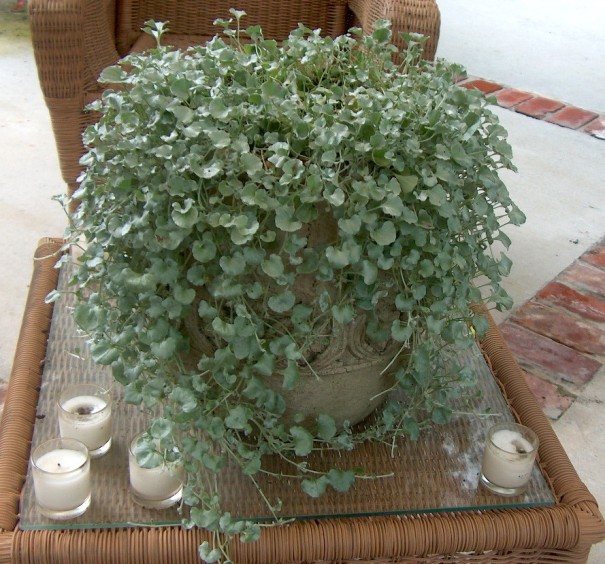

Ampel dichondra is relatively resistant to diseases and pests. This is due to the origin of the plant. Indeed, in essence, it is a weed that is adapted to any growing conditions and has not undergone gene mutations in the course of selective selection. The only "attack" that can destroy even an adult dichondra plant is a nematode. It is worth fighting with all available means.
Planting seedlings in pots
Dichondra is planted in pots in late May - early June, when the weather is warm. In colder climates, the transplant period is postponed to mid-June. A drainage layer must be placed on the bottom of the pot or flowerpot.
Growing and caring for dichondra is not complete without pruning. To give the shoots a shape and increase their density, pinching is periodically done. In the summer, such procedures are carried out approximately every two weeks.
Remember: the minimum temperature in winter at which the plant can be grown is 10 ° C.
Flower propagation
Earlier, I mentioned the propagation of dichondra using seeds. But you can also try by cuttings. Root the growing shoots from time to time and plant them in the ground, from where new shoots will grow, which can immediately be transplanted into open soil (so the mother plant will not be overloaded).
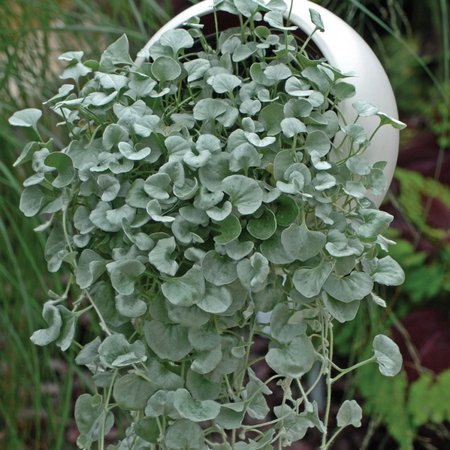

Cuttings can be simply rooted in different pots and watered constantly. After some time, the plant will begin to grow actively, adding in growth.
author Timofeeva V., author's photo
Dichondra is the most prominent representative of ampelous plants that create an evergreen continuous cascade. This emerald or silvery-ash cascade, created by the long flowing shoots of dichondra with small leaves of an almost rounded shape, mesmerizes with its charm. Therefore, florists and landscape designers are so fond of using elegant varieties of dichondra with green and silver leaves for vertical compositions, which can create a unique decorative effect.
The main decorative value of dichondra is long thin shoots with an abundance of leaves densely covering them with silky pubescence. In summer, barely noticeable flowers periodically appear on its shoots.
Step by step instructions for sowing seeds
Before sowing seedlings, it is recommended to soak the seeds for an hour in agave juice diluted with water, or in hydrogen peroxide (1 tablespoon per glass of liquid). Any growth promoter can be used instead of these funds. In it, the seeds must be held for 12 hours. Granular planting material does not need preliminary processing.
Stratification is not required, since dichondra seeds have good germination.
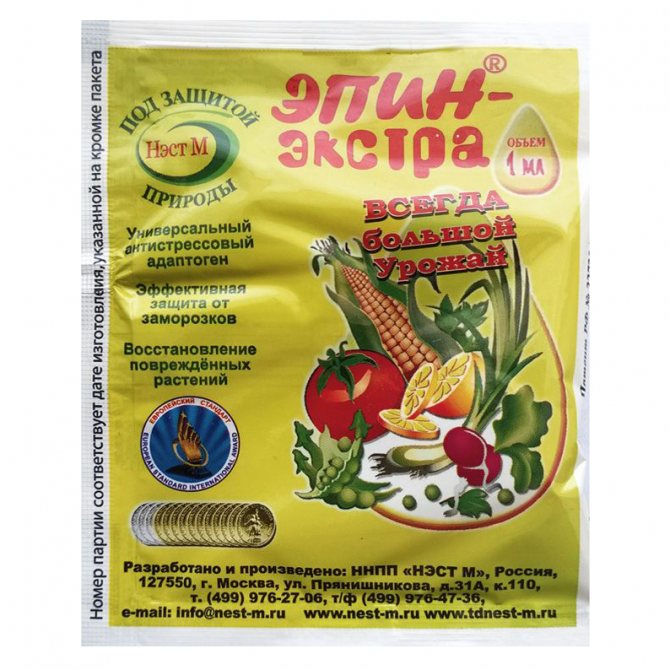

The soil should be loose, with neutral acidity. It must first be spilled with Epin's solution.
Step-by-step instructions for sowing seeds for seedlings:
- Put a layer of expanded clay or gravel on the bottom of shallow containers.
- Fill them with soil.
- Spread the seeds over the surface of the soil, lightly pressing them into the ground. Additionally, you do not need to sprinkle them with soil on top.
- Cover containers with plastic or glass and store them in a well-lit place.
Dichondra in nature, in the garden and in the house
Dichondra belongs to the bindweed family, has ten different species.In nature, dichondra is a herbaceous evergreen perennial that prefers swampy places or simply well-moisturized ones. It thrives on the tropical and subtropical climates of East Asia, America, New Zealand and Australia. The creeping stems of dichondra can reach one and a half meters in length. Creeping along the ground, they create a continuous decorative carpet (10-15 cm high) from small leaves.
Dichondra lianas have been discovered in nature for a long time. Although the simple appearance of these naturally occurring plants did not immediately attract the attention of landscapers and designers. They have recently begun to grow and use dichondra
silvery, or creeping
(Dichondra argentea, Dichondra repens). And in Russia this outlandish plant was first presented at a flower exhibition only in 2004. Due to its originality and unpretentiousness, dichondra immediately became in demand among professional flower growers and amateurs. Florists cultivate mainly two varieties of this ampelous beauty, called "Emerald Falls" and "Silver Falls", using them to decorate the balcony and garden, in home floriculture.
Dichondra in landscape design and indoor floriculture is used mainly to create green screens, in vertical gardening. It is planted in hanging baskets and tall pots, eventually forming beautiful cascading cascades of greenery and silver. It is appropriate to plant dichondra to standard houseplants in large containers - its shoots completely cover the soil and the surface of the flowerpot. Dichondra is often used for background landscaping, perfectly setting off bright floral arrangements with its bright green or silver leaves.
Growing by seeds
When propagated by seeds, dichondra is grown by a seedling method.
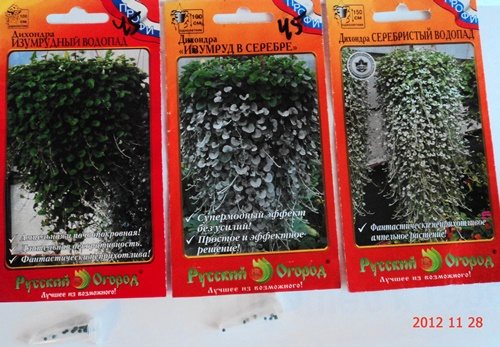

Dichondra Seed Packets
Seedlings grow very slowly, and in order to admire the emerald cascades of shoots in summer, it is necessary to sow seeds in winter. In mid-latitudes, the optimal time for this is mid-January - early February; for the northern regions, sowing dates are postponed to mid-February - early March. Seeds do not require pre-sowing treatment, and therefore you can immediately start the main process.
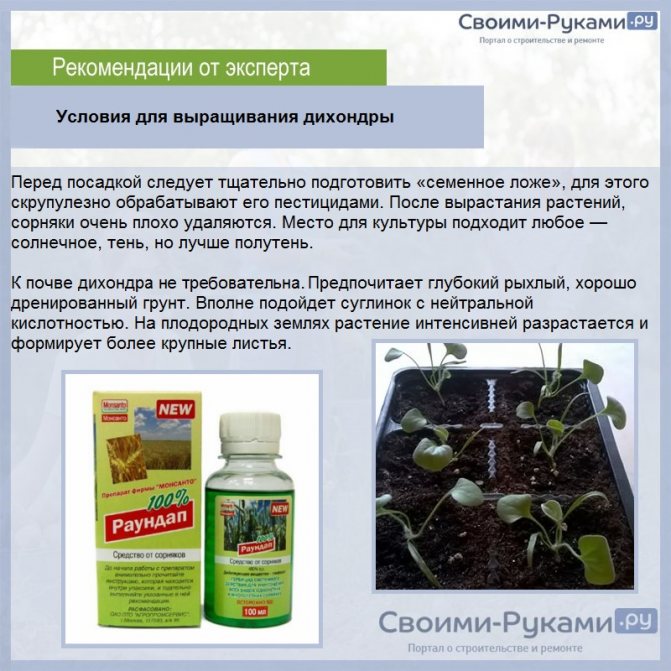

Conditions for growing dichondra
Step 1. For sowing, you need small containers no more than 5 cm high.
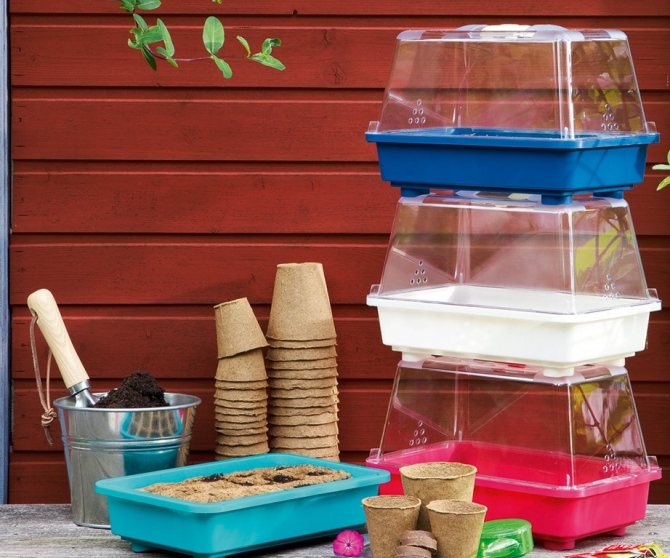

Micro greenhouse for seedlings
A drainage layer of expanded clay or fine gravel is laid in them, then filled with a soil substrate. The substrate is spilled with any available growth stimulant, for example, "Epin" or "Zircon". You can also use a humate solution.


Step 2... Seeds are evenly scattered over the surface of the substrate, lightly pressed. You can sprinkle them with a layer of earth no more than 5 mm, but this is not necessary, the seeds germinate so well.
Step 3... The containers are covered with polyethylene or glass and placed on the windowsill so as to exclude direct sunlight.
For germination of dichondra seeds, a temperature is required within the range of 18-25 degrees Celsius, therefore, boxes cannot be placed in a cold room. On the 7-8th day, the first shoots should appear, and mass shoots appear approximately 10-14 days after sowing.
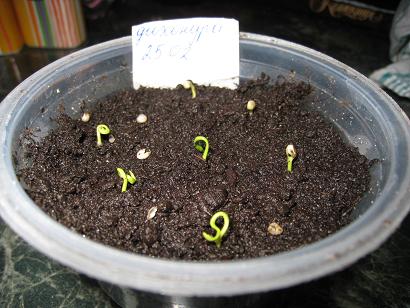

The hatched seedlings need more air, which means that the film should be removed from the boxes. During this period, the seedlings are very sensitive to temperature changes, and even small drafts can destroy the seedlings. On cloudy days, backlighting is imperative, because if there is a lack of lighting, the plants will begin to stretch unnecessarily.
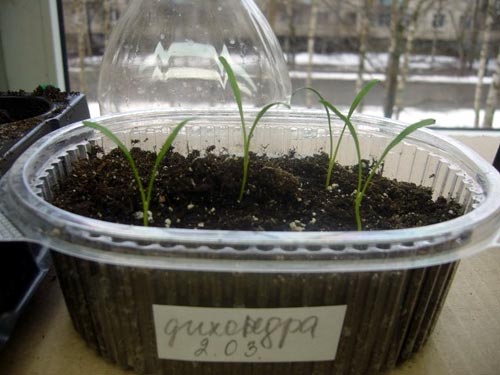

Watering is carried out using a spray bottle and only as needed. Despite the fact that dichondra loves moisture, excess water is destructive for small seedlings. The seedlings should be thinned out after the first two true leaves appear. All weak shoots are discarded, leaving a distance between the remaining about 2-3 cm.If it is a pity to throw away the seedlings, it is worth splitting them all into separate pots. After that, it remains only to maintain the optimal temperature in the room and moisten the soil in a timely manner.
For a very long time, the plants will be thin and weak in appearance, but by mid-May they will noticeably grow up. As a rule, the maximum decorative effect of dichondra appears 100 days after seed germination, but only under favorable conditions. When side shoots are formed and the plant gets stronger, you can plant it in a flower bed or in hanging baskets. The soil in the flowerbed is loosened well, holes are made for each plant separately, leaving gaps of 25-30 cm between them. The soil around the bush does not need to be strongly compacted so as not to damage the roots, it is enough to spill abundantly with water after planting and sprinkle with mulch.
When transplanting into pots, it should be borne in mind that 4-5 seedlings must be planted in a pot with a diameter of 10 cm to create a lush crown. If the amount is reduced, it will not be possible to form a waterfall from the vines, and if you plant more, the roots will not have enough space and nutrients.
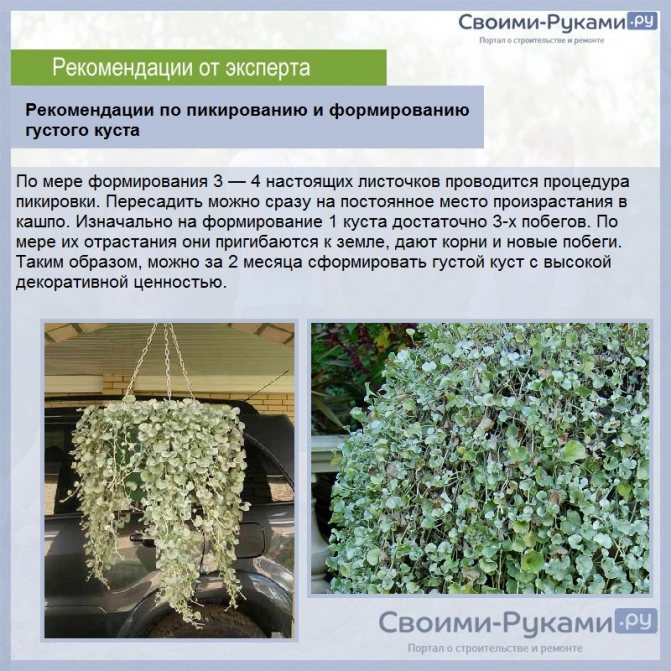

Recommendations for diving and forming a dense bush
In open ground, seeds are sown to create a lawn, but only in warm regions where the winter temperature does not drop below minus 3.5 degrees. The sowing process is very simple: the selected area is loosened, moistened, and then the seeds are evenly scattered. The seed consumption is 10 g per square meter. Then the soil is rolled up, watered again, and kept moist until shoots appear. Sowing can be done throughout the season - from April to October. The grown dichondra seedlings are fed with nitrogen liquid fertilizers. Such a lawn is highly decorative and resistant to trampling, it tolerates shading well.
Growing dichondra
Dichondra grows naturally in climatic zones with high air temperatures and chooses well-humidified places. Such conditions should be created for her. Abundant watering during the growth period and frequent irrigation of the leaves have a beneficial effect on the splendor of the growth of dichondra shoots. The optimum temperature for its content is 16-26 degrees.
Dichondra loves a lot of sunlight (this is especially true for the variety with silvery leaves). Due to the lack of sun, the plant can lose its unique decorative effect. This can lead to excessive stretching of bare shoots and crushing of dichondra leaves, loss of their natural color.
In indoor conditions, dichondra requires location on the southern, well-lit windows. The green-leaved variety is not so picky about sunlight, so it can be grown in lightly shaded windows and areas. Dichondra winters well in the cool conditions of the winter garden at rest, along with other indoor plants.
Dichondra is undemanding to the composition of the soil, it can perfectly develop on any land. To create the best conditions, you should use loamy, well-drained soil with a slightly acidic reaction. The plant does not like stagnation of moisture, this can cause rotting of the surface roots.
To give the dichondra a beautiful shape, the regrown stems are regularly pinched. This procedure makes the bush more lush, giving impetus to the formation of new numerous shoots, and rejuvenates it.
In areas with a cold climate, the thermophilic dichondra does not winter outdoors. Therefore, in the fall, before the cold snap, it is sent indoors, and with the onset of heat, it is again taken out into the open air.
Dichondra can be considered very resistant to various diseases and pests. Being a weed by nature, it resists various misfortunes well. Due to the high moisture content of the soil, it can be affected by a nematode, the appearance of which is easier to prevent than to fight it later.
Dichondra can be grown from seeds and propagated by cuttings and layering. Vegetative propagation methods are simpler than seed, and a decorative effect is also achieved faster, but they require the presence of a mother plant.
Pests and diseases
Dichondra is resistant to most pests and diseases. Heavily pubescent leaf blades are not particularly attractive for aphids, flea beetles, spider mites and other parasites. However, if the pests still choose the plant, a single treatment with insecticidal preparations is enough to get rid of them.
Of diseases to gardeners can annoy rot, formed as a result of excessive watering and stagnation of moisture in the soil. In such cases, washing the root mass with a solution of potassium permanganate and removing rotten roots and shoots will help to return the plant to a healthy look.
Getting rid of root rot when growing dichondra lawn is much more difficult: you will have to remove the entire diseased plant, which will seriously spoil the appearance of the lawn. Therefore, with a ground cover growing method, the most effective measure of combating rot is its prevention, that is compliance with watering conditions.
Propagation of dichondra by cuttings and layering
Fast and simple methods of propagation of dichondra are cuttings and rooting of cuttings. Dichondra rooted well and forms an independent plant, which, as it strengthens, can be planted in a permanent place.
If the dichondra is grown as an ampelous plant, then in order to form a beautiful crown, the ends of the stems must be periodically pinched or cut too long shoots. Sliced cuttings are planted in moist soil, treated with a root stimulator.
When growing dichondra as a ground cover plant, part of the shoot can be sprinkled with earth, and after a while roots will appear in this place. Cutting off the rooted shoot from the main plant, we get a new copy. It can be transplanted or left in place to form a denser, living carpet of dichondra leaves.
How to keep silver dichondra in winter
Where winters are cold, dichondra is grown as an annual plant, but it may well hibernate in a cool room. Before wintering, too long shoots are cut off. All concern comes down to periodic watering and rare top dressing. If possible, it is better to place a flower pot on an entrance window or on a heated loggia - there is enough light there, and the temperature is optimal. If the dichondra has to be kept in the room, then after turning on the central heating, the leaves should be sprayed with water several times a day. But most of all, it suffers from a lack of lighting - take care of organizing the backlight with special lamps.
You can try to keep the dichondra in the basement. To do this, cut off all the shoots, carefully dig out the rhizome, transfer it to the basement with a lump of earth, and cover it with wet peat. In the spring, new stems with sprouts are formed on such a plant. They can be used for grafting, and the bush itself is planted again in the flowerbed.
Features of dichondra care
Growing a beautiful, lush dichondra is an easy, but time-consuming process. The plant is able to maintain its exquisite decorative effect for 5-7 years, subject to simple maintenance rules. It is desirable that the earthen lump is always moistened, but stagnation of water is unacceptable. In order to avoid leaf burns, it is better to water the ground cover plantings of dichondra in the evening.
Long shoots of dichondra like high air humidity; this can be achieved by regularly spraying luxurious foliage. Spraying every day will significantly speed up the growth process, and will allow you to build up a large leaf mass.
In the spring-summer period, it is necessary to feed dichondra (twice a month) with fertilizers with a high nitrogen content.
Dichondra becomes the most vulnerable in winter. Dry air in an ordinary apartment and a small amount of daylight can adversely affect the wonderful hair of the plant. Therefore, it is advisable to install additional lighting and regularly moisturize the luxurious foliage. Root dressing once a month nourishes the sprouts well and allows the leaves of the dichondra to remain fresh.
Every week, for 10 years, for our 100,000 subscribers, an excellent selection of relevant materials about flowers and garden, as well as other useful information.
Planting and caring for a decorative vine
Dichondra herbaceous shrub naturally grows on well-moisturized soils at high air temperatures. Therefore, it is necessary to plant the plant in open ground or take out the pots outside only after the air temperature has been established. within the range from 16C to 26C
.
Dichondra with silvery leaves loves a lot of light, so it is placed in sunny areas. At home, this should be a south-facing window. With a lack of light, the silvery foliage will simply turn green, the shoots will stretch out, and the leaves are crushed. As a result, the branches will become bare, and the plant will be less decorative.
Dichondra can grow on almost any soil. But most of all she loves well drained loamy soil
... When moisture stagnates, the surface roots can begin to rot.
With proper care, the herbaceous shrub is able to maintain its amazing decorative effect for five to seven years.
- The earthy lump in which the dichondra grows should not dry out. However, excess moisture is also harmful to the plant. The soil should be moderately moist at all times.
- Watering should be done in the evening. This will prevent burning the leaves.
- The high humidity that the plant loves can be achieved by regularly spraying the leaves. This daily routine will help build up leaf mass and speed up the growth process.
- When caring for a dichondra, an important point is its feeding. Timely application of organic and mineral fertilizers is required. You need to feed the plant once a week, alternating mineral fertilizer with a high nitrogen content and organic matter (for example, "Ideal").
- Pruning is required to form a dense crown and when preparing the plant for winter. To cause branching of dichondra, its stems need to be cut 7-8 cm.
- For autumn-winter, shrubs need to be brought indoors, and gradually reduce watering. However, you should be aware that a lack of moisture can lead to the death of the plant. During the winter period, there should be enough light and heat in the room. Root feeding should be carried out no more than once a month.
- The ampelous dichondra is resistant to damage by pests and diseases. This weed, adapted to any conditions, can only be affected by a nematode. It must be fought with all available means.
How perennial bushes winter
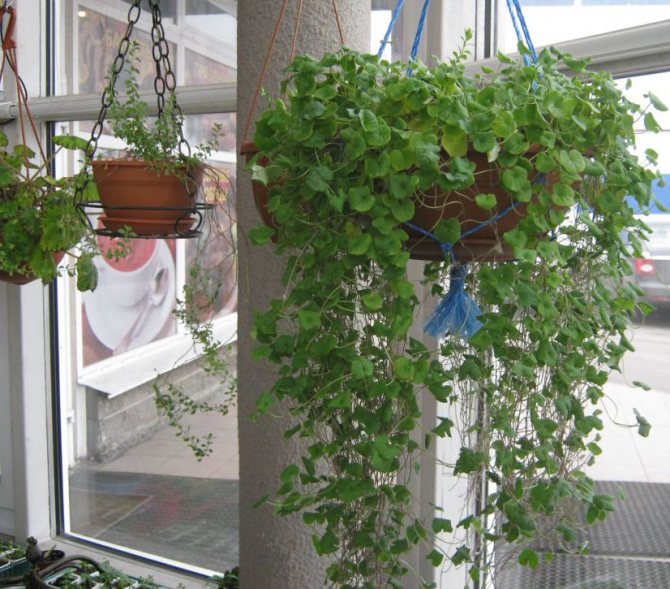

In southern regions with warm and mild winters, dichondra can wait out the winter in a place of constant growth. To reduce the risk of freezing of the bush, soil is applied to it. A special covering material is placed on top of the ground, on top of which the foliage of trees can be thrown.
In more severe regions, perennials can wait out the winter in a greenhouse, where plants growing in the subtropics and tropics grow. You can also store culture pots in a loggia, glazed veranda or balcony. Suitable for dichondra rooms with a lot of light. The temperature regime should not be lower than the 10-degree mark. If the temperature is too low, the plant can get sick and die.
Fertilizers should not be applied during the entire winter period. This will help reduce stem growth. Dichondra is watered at this time every 10-11 days. The plant is able to withstand even extreme drought.
Selection and preparation of planting material
Young plants in pots can be purchased in stores. When choosing, you should pay attention to the presence of new shoots and the absence of visible signs of disease.
The purchased plant must be inspected for the presence of pests, rinsed with cool water. If the dichondra was purchased in a package with specialized soil, it is necessary to transplant it into a new pot with fertile loose soil, not forgetting about drainage. Then place the container in partial shade, and water the flower as the soil dries up.
With proper care, the bush grows strongly in one season, so one copy is enough for planting in one planter.
How to prepare for winter?
Often, wintering for dichondra becomes a problem. As a rule, a plant on its own cannot survive the Russian winter. Considering that it usually takes a long time to grow a plant, it is a shame to lose it due to weather conditions, so you can try to save it for the winter. If the dichondra was grown as an ampelous plant in a flowerpot, then it must be transferred to the house for the winter. Then dry air in the house becomes the worst enemy, therefore a "greenhouse" is created for the dichondra for the winter, but with a sufficiently low temperature. At temperatures below 15 degrees, the plant will survive but will not develop. If dichondra was grown as
Dichondra ampelous is a luxurious evergreen vine. This is a representative of the huge Vyunkov family. It is successfully cultivated in countries with tropical and subtropical climates. Currently, the dichondra plant is widespread among most flower growers, due to its unusual and decorative effect.
It is used to create decorations on balconies, gazebos, attics and verandas. Particularly popular is the Silver Falls variety.
Its leaves are medium-sized, inflorescences are small, painted in bright burgundy, scarlet, white or light green. Due to the long curly vines, which sometimes vary up to two meters in length, the dichondra is considered ampelous and groundcover.
Types and varieties of dichondra for growing at home
For home cultivation, only Creeping or Silver dichondra is used. On its basis, 2 popular varieties have been bred, which are popular with flower growers.
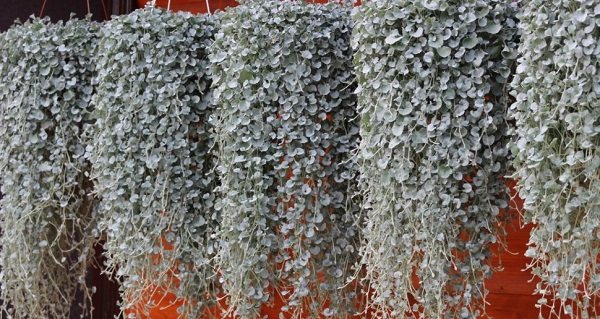

Emerald Falls
Ampel plant native to New Zealand. There it grows like a weed. It is also grown as a lawn grass. Long shoots and leaves are green in color. The leaves are smaller if the crop grows in a well-lit area, and larger if in partial shade.
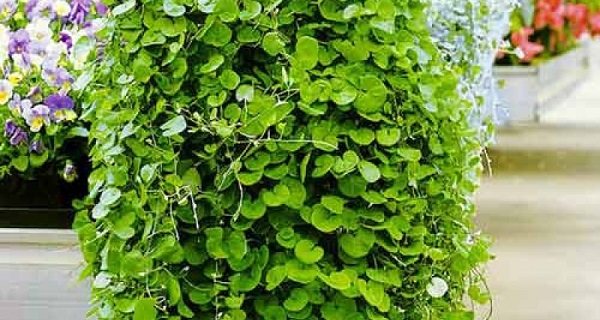

Silvery waterfall
A variety with silvery leaves on long stems that can reach 1.5 m in length. It prefers to grow in well-lit areas with sufficient watering. The plant is easy to care for and resistant to diseases.
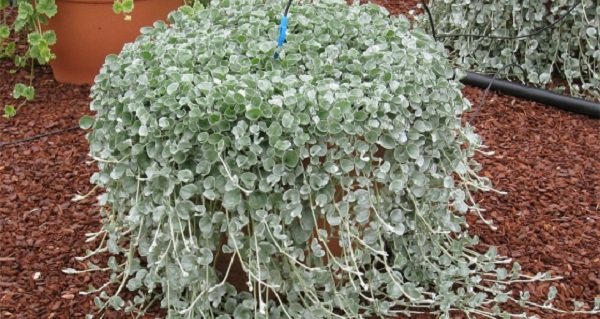

Planting seeds
You can take a shallow container for planting seedlings, food plastic containers are great. The seeds are pre-soaked in settled water at room temperature for about a couple of hours. You can use a solution of a root growth stimulant.
The soil is poured into a container for planting and is well moistened. Planting is carried out when moisture completely saturates the soil and its excess goes into the pallet. The seeds are laid out on the surface at a distance of five centimeters and covered with a layer of soil. For germination, seeds need to maintain a temperature of about twenty-two degrees Celsius.
First shoots
appear within a week, and after ten days, full germination occurs. At this time, it is necessary to maintain the temperature and monitor the moisture content of the soil. As with most garden flowers, you can cover your crops with plastic for a greenhouse effect.
When shoots appear, the greenhouse is removed.With a lack of light, the plant may develop more slowly, and therefore, especially on cloudy days, it is important to carry out additional lighting. The first three to four true leaves indicate the need for a pick. At the same time, three seedlings are planted in one container, which will quickly get a lush bush of high decorativeness.
When grown in flowerpots, you can immediately dive into the main container, but leave it in a warm room.
For the active growth of dichondra, as mentioned above, foliage spraying plays an important role
... In the first months of growth, it is performed about once a day, usually in the morning and evening, then watered depending on the weather and the required volume of the bush. By the way, lianas do not grow more than one meter in hanging pots.
Transplanting into open beds and transferring flowerpots to fresh air is performed in May, when the weather is warm. On a flower bed, plants are planted at a distance of about forty centimeters. When forming an alpine slide, the dichondra is planted last, since when it grows, it can cover the entire area of the site and planting other flowers will be difficult. Directly the transplant itself is carried out together with a lump of soil on the root system.
To maintain decorativeness, the vines are pruned, and the cut parts are used for grafting. Top dressing of the soil, as well as for Coleus, is performed once a month using complex nitrogenous fertilizers.
Among the main enemies of dichondra
it is worth noting the nematode, which should be controlled by a series of insecticides (for example, mercaptophos) spraying up to four times with an interval of five days.
Video 2. Dichondra - a silvery waterfall in your garden
Dichondra (Dichondra
) Is a very sophisticated plant that can be grown both indoors and in the garden, either by creating "waterfalls" (the so-called ampel plant), or using it as a ground cover.
Top dressing
Dichondra is fed twice a month using special solutions for decorative deciduous crops. If you plan to transfer the plant for the winter to a cool room, then the last time it should be fed should be in September.
If the dichondra hibernates in an apartment, it is fed once a month or two.
On a note! In order for the foliage to have a rich color and have a good density, the dressing must contain potassium and nitrogen.
How seedlings are grown
Planting and caring for this plant is not false. But still, there are certain rules, the observance of which will help to increase the rate of reproduction of layers.
Cutting reproduction
The stalk is cut off from an adult plant, then it is planted in fertile soil, covered with any material on top. Layering is a simple process. It is important to make depressions of a few centimeters, plant the cut stems in the substrate, and tamp them.
In order for rooting to proceed quickly and as successfully as possible, it is important to observe certain temperature indicators in the room - at least 20 degrees.
Watering is also carried out with slightly warmed, better settled water. To create a slight greenhouse effect and speed up the root formation process, it is recommended to use a non-woven covering material. It is best to take root cuttings on windowsills, well lit by natural sunlight.
Propagation using seeds
You can also use seeds to grow seedlings. Seed propagation is similar to growing seedlings of other garden plants. Seed material is planted in the second half of January - early February. A certain depth of planting of the material should be observed, it should not exceed 50 millimeters.
Sowing seeds is carried out in special containers - pots, pots, wooden boxes in a pre-moistened soil substrate. It is also recommended to water it with a growth stimulant. Cover the landings with plastic wrap.
After seven to ten days, the first shoots usually appear. For successful cultivation, certain conditions must be observed - good lighting, a temperature of at least 22 degrees.
It must be remembered that this ampelous plant at the first stage of cultivation grows rather slowly, therefore, it is necessary to correctly calculate the period of planting of seed material.
Dichondra flowers become as decorative as possible no earlier than three months after planting the seeds in the ground. During planting, a certain interval between plants should be observed - at least 30 centimeters.
When growing in a separate pot, you can plant more than one plant, but then a picking process is carried out, in which the sprouts that appear are planted in separate pots.
The seed-grown liana is successfully used for decorating lawns. Such lawns are frost-resistant, resistant to damage, and tolerate well even the lowest air temperatures.
Seed planting is also carried out in open ground, along the lawns. The soil must be well moistened and loosened beforehand. The site must be in direct sunlight. This is one of the basic requirements of this plant. After planting the seeds, they must be tamped, watered.
A prerequisite for successful cultivation is feeding with nitrogenous fertilizers. They can be purchased ready-made at specialized points of sale. Such fertilizers are ideal for dichondra.
If the plant is planted in a garden, it is dug up along with a lump of earth, transferred to a cool basement or cellar. And until spring it will be in a state of hibernation.
With the beginning of spring, the plant begins to wake up, young sprouts and roots appear on it. They are carefully separated from the mother bush, transplanted into open ground.
Reproduction methods
Culture reproduces in 3 ways.
Layers
It is used most often for its simplicity and effectiveness. The procedure can be carried out in spring and autumn. Air roots grow from internodes of long shoots. To root them, you just need to dig them into the ground. When the cuttings take root, separate it from the mother plant and transplant it into an individual container.
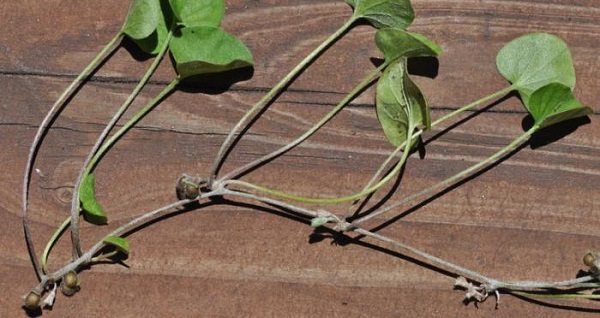

Cuttings
Cut off several cuttings from healthy, strong shoots. Dip them into the water. You can add a root stimulator (Kornevin or Epin) to it. The roots will appear in about a week. Plant cuttings 3 at a time in pots with suitable soil. After another month, plant the plants in pots, where they will be grown further.
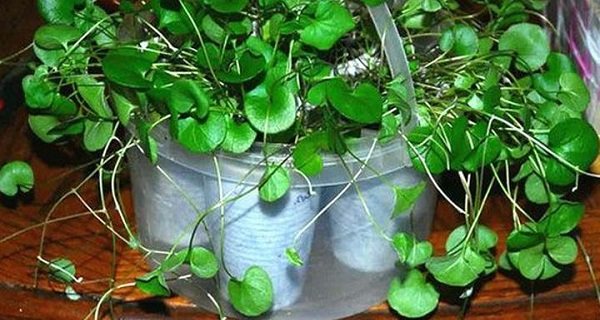

Seeds
This is the most time consuming way to reproduce dichondra. Sowing seeds is carried out from late January to early March. Fill the planting container with fertile sandy soil. Cover the seeds to a depth of 0.5 cm. Water the crops, cover with foil or glass. Place in a room with a temperature of +25 degrees.
After the emergence of seedlings, the shelter can be removed, put the container in a bright place. A pick of seedlings is carried out when 2-3 non-standing leaves are formed on them. It is better to plant them at once in 3 pieces in a pots. As the plants grow, it is recommended to bend them to the ground so that even more roots appear on them. Thanks to this, you can get a more lush bush.
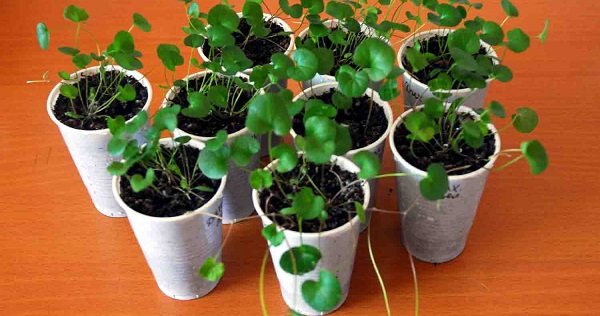

Description
Dichondra is evergreen, herbaceous, with a shallow root system. Its stems quickly germinate in nodules, which enables it to more rapidly form new numerous shoots.
Typical external signs of the plant:
- The shoots rise up to 10 cm in height, and the lashes grow in length up to 2 or even up to 8 meters. Densely covered with leaves, they fall on the ground in a beautiful, dense, fluffy carpet.
- The leaves are simple, coin-like or kidney-shaped, up to 2.5 cm in size, there are two shades - silver or emerald. The length of the petioles is up to 3 cm.
- The flowers are small, 2-3 mm in diameter, with a creamy, purple or greenish tint, bloom from spring to late summer.
- The fruit is a capsule in the form of a ball with two capsules of hairy seeds in a small amount.
Biological features
Important!
You should take care of a good one, since dichondra does not like stagnant water and does not tolerate excessive soil moisture. If you do not worry about this, then it can die from rotting of the root system.
To plant seeds, it is necessary to prepare the soil, which will contain equal amounts of fertile soil and sand. Before sowing plants, the soil must be well moistened.
Sowing depth
The sowing depth of dichondra seeds should be small: usually it is sown in shallow, up to 0.5 cm
, holes and lightly sprinkle with earth on top. At the same time, it is not recommended to strongly press the topsoil.
Crop care
After the seeds have been placed in the soil, care must be taken to ensure that the soil does not dry out. To do this, recommend spray
the top layer of soil so that it does not lose its looseness. In order for the seeds to germinate well, it is recommended
cover the container with a film
, achieving the greenhouse effect. It is recommended to keep crops in a warm place so that the air temperature is not lower than +22 degrees. Before the first shoots appear, it is necessary to keep it in a sufficiently high humidity.
If you did everything correctly, then in about a week the first shoots will appear.
Did you know?
In Southern California, in the 1960s, dichondra was used as an alternative, as it was considered resistant to trampling and could tolerate slight frosts. However, such an experiment was not crowned with success, because to achieve the ideal, it took a lot of effort and time.
Seedling care
After the first shoots of dichondra appear, it is necessary to begin to accustom the plant to open air: for this, the greenhouses are regularly ventilated, daily opening the film for an hour or two. After the plants are fully accustomed to the open air, after 1 week, it is recommended to reduce the humidity - to spray less often.
It is necessary to water the seedlings of dichondra regularly, as soon as you notice that the soil is dry. You should also feed seedlings for ornamental plants, which are purchased in a specialized store and used according to the instructions on the label.
The first true leaves appear just a month after the plant emerges. It is at this time that it is recommended to conduct dive of seedlings.
Seedlings are planted in separate pots, while several copies can be placed in each pot.
Dichondra, photo
Growing by seeds
Dichondra seeds germinate slowly, therefore, in order to get a decorative beautiful bush in summer, they need to start germinating in winter. In the middle lane, sowing can be done already in mid-January - early February, in colder areas, the planting dates for seedlings come at the end of February - early March.
Sowing seeds is as follows:
- You will need small containers no more than 6 cm high. It is advisable that they have special holes for the release of excess moisture. A drainage consisting of gravel or expanded clay is poured into the container, a soil substrate is placed on top. Before planting, the seeds can be watered with any means that stimulates growth, for example, "Epin", "Ecosil", "Zircon".
- The seeds are spread evenly and lightly pressed into the potting mix. You can sprinkle them with earth a little, but this is not necessary.
- The containers are covered with foil or glass, they are installed on the windowsill. For seeds to germinate, a temperature of 17-25 ° C is required. Containers cannot be placed in a cool room. The first shoots should appear in about a week. Massive shoots germinate in 10-12 days.
Emerging young plants require a lot of oxygen for healthy growth, so the glass or film must be removed. The growth is very sensitive to temperature, even short-term drafts can negatively affect it.
How to care for seedlings of Dichondra "Emerald Falls"
The first shoots of Dichondra "Emerald Falls" appear in about a week. The mass growth of seeds occurs after 2 weeks. During this period, young sprouts need fresh air, therefore, the film (glass) must be removed from the containers. Seedlings must be protected from possible drafts - they can become destructive for them.
It is necessary to water the seedlings very carefully so as not to damage the sprouts that have not yet matured. It is best to water with a spray bottle. In no case should the soil be waterlogged.
The picking of seedlings should be carried out during the period when the seedlings reach the phase of 2-3 true leaves. It can be transplanted into separate containers, or better immediately to a permanent place of growth - in a pots.
At first, the seedlings will be very thin and weak, but by mid-May they will already get stronger, grow up. Seedlings are planted on a flowerbed or in a pots only after side shoots appear.
If you plan to grow Dichondra "Emerald Falls" in a flower pot, then it is best to plant 3-4 seedlings in one container. Only in this case it will be possible to obtain an emerald cascade.
In order to plant seedlings on a flower bed, it will be necessary to loosen the soil well, make holes at a distance of 30 cm from each other, and place seedlings in them together with a lump of earth. Do not compact the soil - this can damage the root system. Sprinkle the seedlings with water, and sprinkle the planting site with mulch.
Seeds can be planted outdoors to create lawns. However, a positive result can be achieved only in the southern regions, where the winters are warm.
How to feed a plant and the need for pruning
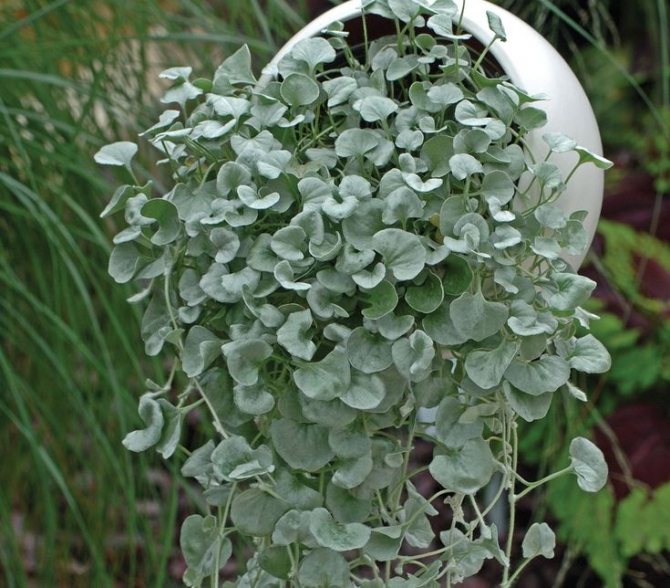

For the effectiveness of dichondra, it is recommended to feed it regularly. Fertilizer should be applied once every 2 weeks. In order for the plant to grow well, to be lush, it is recommended to feed it with a nitrogen-potassium mixture of mineral fertilizer.
For the first time, it is necessary to pinch the lashes when forming the eighth sheet plate. Subsequently, the branches are pruned as they grow and branch. It is recommended to trim the dichondra once within 2 weeks.
Weeds should be pulled gently. This will prevent the risk of damage to the root system, since the roots are located close to the surface. It is recommended to loosen the ground carefully, it is better to do it with your hands, and not with special tools.
How to water a crop
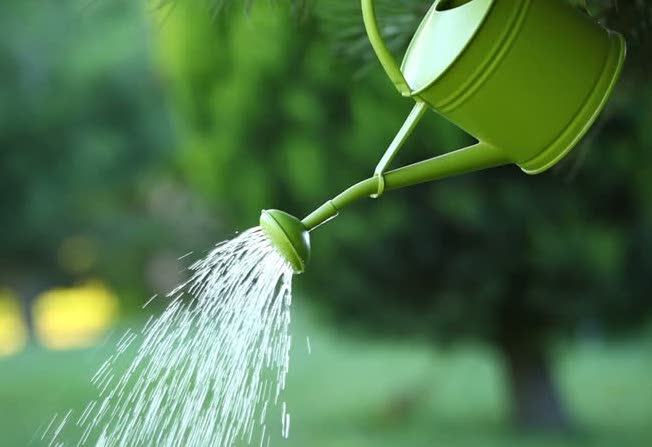

An ornamental evergreen is hygrophilous. The shrub should be watered regularly. Watering is usually done every day. If the soil is wet, then water is located close to the surface. Florists advise to carry out watering on these lands every 4-5 days.
Watering the crop should be done in the evening, this reduces the risk of burns on delicate leaf blades. If the weather is hot and dry, then in addition to watering, it is recommended to spray the culture. But this process is also carried out in the evening.
How to grow a plant


The plant is unpretentious. The cultivation process can be briefly presented as follows:
- Dichondra is easy to grow both in summer in your flower garden and in a flower pot... It does not bloom, being an ornamental deciduous plant.
- It is necessary to plant planting material for seedlings from the middle of the winter period in a box similar to the one in which you plant tomatoes or peppers... Young plants are planted on the site in late spring - early summer, when the time of subzero temperatures has passed, not only during the day, but also at night.
- Watering should be done in the evenings when the sun hides.... In this case, the delicate leaves of the plant will not burn under the hot sunlight. You need to water the dichondra every day if the weather is hot. At 18-20 - degree temperatures, you can water every other day. Cold water should not be taken for irrigation, as in this case various diseases develop.
- In addition to watering, it is necessary to spray deciduous plates in hot dry weather.... But this cannot be done during the day. It is better to spray the leaves in the evening, when the sun sets over the horizon.
- The plant is unpretentious... It blooms vigorously in any area, withstands an excessive amount of sunlight. Rapid growth is also observed in shaded areas. You need to know that only areas with a lot of sunlight are suitable for growing silvery dichondra.
- Dichondra grows especially rapidly on loamy soils.... They must be drainage and have an excellent acid-base balance. But in overly acidic areas, the culture can hurt and even die.
- For the first time, it is necessary to feed the plant immediately after the emergence of tender sprouts.... The next time the seedlings are fed a few days before transplanting to a permanent place. Then you need to fertilize the dichondra every 2-week period. A special mixture made from an equal amount of potash and nitrogen fertilizers is suitable for feeding. In this case, the dichondra will grow vigorously throughout the growing season.
- For the splendor of the culture, it is necessary to pinch its stems... This is carried out at a time when the seventh and eighth leaves are formed. You should also prune the stems after a week's time to keep the plant lush and shaped.
- Propagate the plant by sowing seeds for seedlings... Also, gardeners use the method of planting cuttings and layering.
- The plant as a whole copes well with insect pests... But it should be thoroughly sprayed several times during the growing season. This allows you to control fleas, aphids, whiteflies and nematodes, which can destroy the delicate leaf blades of the culture. The method of dusting with lime helps to fight insect pests. It is best to apply a small amount of fluffy lime.
- The plant is highly resistant to various diseases... But before disembarking to a permanent place at home, you need to spray it with a solution of copper sulfate.
Now let's talk about each of the processes in more detail.
How to grow from seeds?
Growing dichondra from seeds is not a difficult process, but a long one. Sowing seeds begins in January or February. Before sowing at night, it is better to soak them in water with a growth stimulant diluted in it. The next day, the seeds are sown in several pieces in seedling pots with peat soil. Sprinkle lightly with earth on top. The depth of planting seeds is no more than 1 cm. In the future, before the seeds germinate, greenhouse conditions are necessary: moisture and heat. Watering should be regular, a delicate amount of growth stimulant can be added to the water. The warmth is provided by the creation of a "home greenhouse": the pots with seedlings must be covered with glass or stretched cling film, leaving a small hole for oxygen to enter. At a temperature of about 25 degrees, it will take about 10 days for the seeds to hatch. When the sprouts are visually stronger, the "greenhouse" can be removed. It will take another one and a half or two months before the first two main leaves appear on the plant, and it is ready for planting in open ground or transferring to a flowerpot outside.
Dichondra seedlings
Combination with other plants in decorating the site
With the help of dichondra, which grows in the open field, you can make many eye-pleasing combinations:
- cover the surface of the earth;
- decorate the gazebo and any other object in the garden with greenery;
- a kind of silver waterfall looks great on the rocky surface of the alpine slides, creating the sensation of flowing water in the sun.
A dichondra carpet will accentuate the shade of bright colors: petunias, dahlias, bindweed. This combination will look beautiful in family photos.
Dichondra is an excellent tool for creating a unique landscape on the site. But remember that the plant will tend to overgrow and may oppress weaker crops.
Use in garden compositions
Plants can be planted separately or in combination with other flowers. Dichondra can be combined with,: they will make an excellent composition and will look very impressive together. Often they also combine different varieties of dichondra, for example, the "Silver Falls" can be combined with the "Emerald Falls": they will present an excellent picture of a juicy and lush cover of silvery and bright green shoots.
In order to grow a beautiful and healthy plant, you must adhere to some rules for caring for dichondra.
Watering
Watering is a very important part of plant maintenance and should be done regularly as soon as the soil dries up a little. It is important to ensure that during subsequent watering the soil is not excessively wet, which can lead to rotting of the root system.
Top dressing
In order for dichondra to actively develop and delight the eye with its abundantly growing silvery leaves and long shoots, it is necessary to introduce and in a timely manner. Top dressing is recommended to be carried out once a week, while alternating mineral fertilizers with a high content of and. Ideal feeding is well suited for silver dichondra, but there are a lot of them in a specialized store, and they will tell you which one is better to use.
Pruning
In order for the dichondra to form a beautiful and lush crown, it is recommended to carry out autumn pruning of shoots. Before the dichondra goes to winter, it is necessary to cut off all the shoots by 10 cm: such a manipulation will provoke the spring branching of the dichondra next year.
Reproduction and growth conditions
Dichondra is propagated by seed and vegetative method in open ground or flowerpots, but since in our climate this culture does not withstand winter, it is preferable to use it as a planting material. the seeds
.
Video 1. Planting dichondra seeds
The soil for this plant should be nutritious, of weak or neutral acidity, but an excess of alkali in the soil affects the dichondra negatively. Loam and sandy loam with the addition of peat are suitable.
Very often this flower is grown in hanging flowerpots, and in this case it is important that the soil has good drainage properties.
The planting site should have a variable shade, but the dichondra also feels quite good in open flower beds.
Since flowering does not matter when growing this crop, when sowing seedlings, only the growth time of the latter is taken into account until it is ready for planting in open ground. Typically, the optimal planting time is in the last week of February.
Decorative use of vines
Considering that most types of dichondra are ampelous plants, they are used to decorate recreation areas, planting garden areas in pots, baskets.
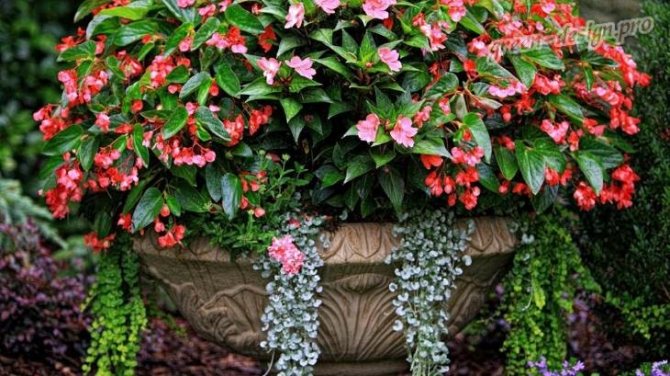

The cascading flower shoots look like a green waterfall, giving the space a unique, fabulous look. Thanks to the colorful greenery, the flower is beautiful in individual plantings, it is also used as a backdrop for the brighter representatives of the floral world.

